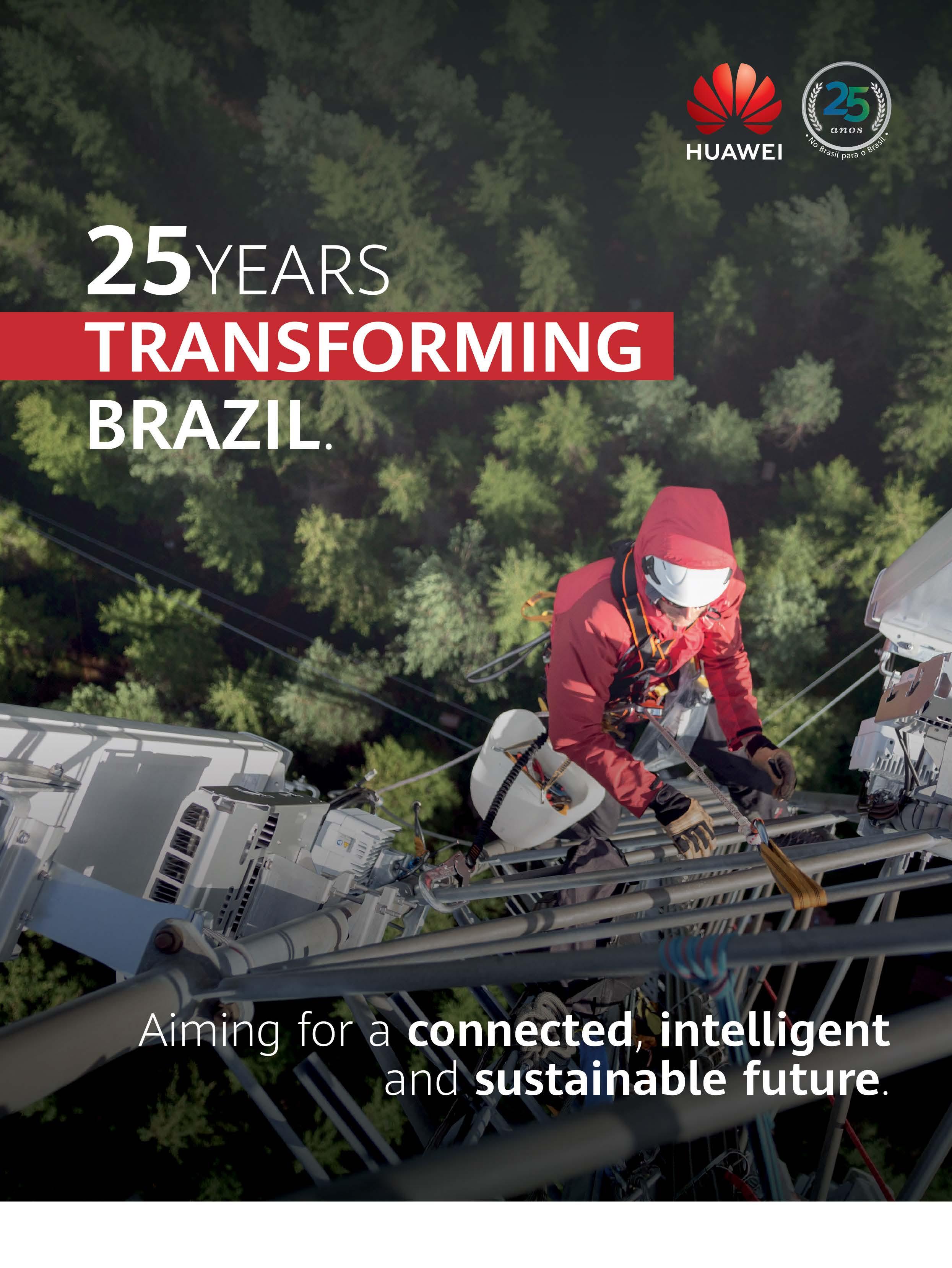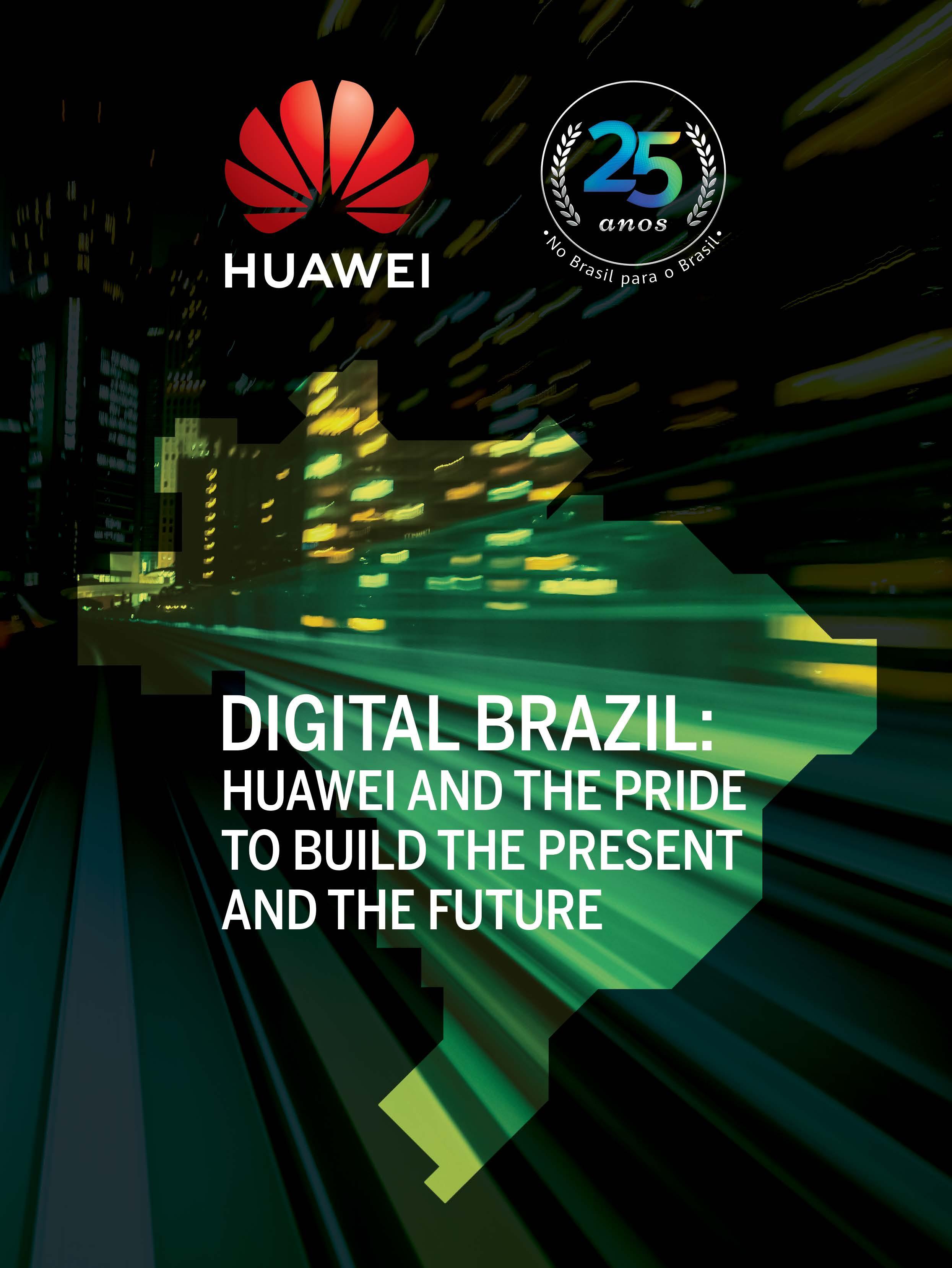
INTERVIEW • Sun Baocheng 03
Sun Baocheng
CEO • Huawei Brasil
Public Affairs and Communications Department
Atilio Rulli
Vice President of Public Relations for Huawei Latin America and the Caribbean

Zhuli
Vice President of Public Relations at Huawei Brasil
Cintia Lima
IN BRAZIL FOR BRAZIL
In its 25 years in the country, Huawei has pioneered in markets, proved its innovative culture, and won the trust of customers.
TALENTS WHO MADE AND STILL MAKES THE 25 YEARS
Many people participate in building Huawei’s success in Brazil – with some virtually from the beginning, and others who have been with the company for a short time. With a diversified profile, active in several areas, they help us do the best for customers.
MARKETPLACE THE 5G ERA HAS ALREADY BEGUN
5G ushers in a new era of connectivity, a perfect storm capable of revolutionizing multiple industries. The challenge is to know where Brazil can reach.
TRAINING
TIMELINE 06 14 18 22
Director of Public Relations at Huawei Brasil
Weijiaxin
Communications Manager at Huawei Brasil
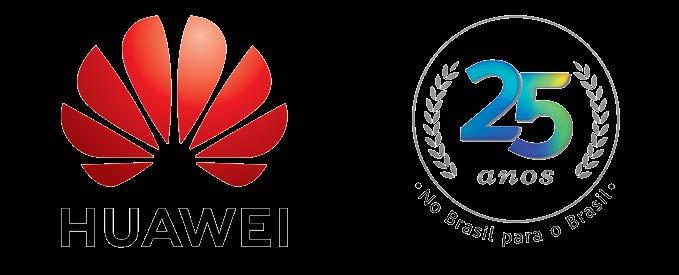
For more information, please visit Huawei online or follow us:
Facebook facebook.com/HuaweidoBR


Instagram instagram.com/huaweibr
LinkedIn linkedin.com/company/huaweibrasil

YouTube youtube.com/user/huaweibrasil

Press contact: FSB Comunicação huawei.fsb@fsb.com.br
26
The goal is to train 100,000 specialists in technologies such as FTTH, cloud, cybersecurity, Artificial Intelligence, 5G and IoT, among others – all in 2023.

LOGISTICS
WAREHOUSE ENSURES FASTER DELIVERY

To speed up the integration process of parts and guarantee delivery of solutions within deadlines required by clients, Huawei maintains what it calls the Smart Warehouse in Sorocaba.
28
STRATEGY
A COMPANY WITH THE DNA OF INNOVATION
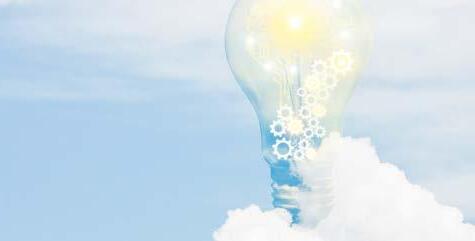
A sustainable, green world requires cloud, renewable energy and cybersecurity, and Huawei is ready for it all.
FUTURE
BRAZIL AS A PRIORITY IN QUALIFIED LABOR TRAINING 30
THE FUTURE COMES WITH INTEGRATION BETWEEN DATA, PEOPLE, AND TECHNOLOGY

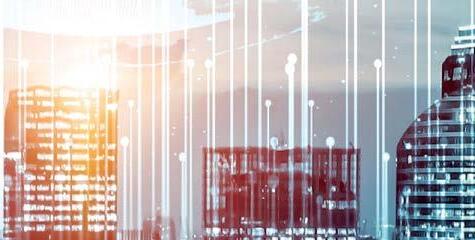


One of the next steps of technology is its humanization. The Internet of Intelligent Things will become that of the senses. And the convergence of silicon with carbon will come. The next 25 years promise many changes.
ARTICLE • atilio Rulli 34
INTERNET ACCESS SHOULD BE CONSIDERED A HUMAN RIGHT
Design, Production and Editing
Editora Convergência Digital editora@convergenciadigital.com.br
Editorial Director

Ana Paula Lobo
Editor
Bia Alvim
Assistant Editor
Roberta Prescott
Reporting / Writing
Luis Osvaldo Grossmann
Fábio Barros

Fernanda Angelo
Art Editing and Layout
Pedro Costa
Photos
Huawei Archive / Disclosure
Printing
Gráfica Athalaia
“WE ARE HERE TO SUPPORT THE DIGITAL TRANSFORMATION”
Sun Baocheng CEO • Huawei do Brasil

“WE ARE HERE TO SUPPORT THE DIGITAL TRANSFORMATION”
The country is opening up new opportunities for digital development, and is where Huawei, which is completing 25 years of activity on Brazilian soil, wishes to be now and in the future, assured Sun Baocheng, CEO of Huawei Brasil.
How can Brazil accelerate digital transformation?
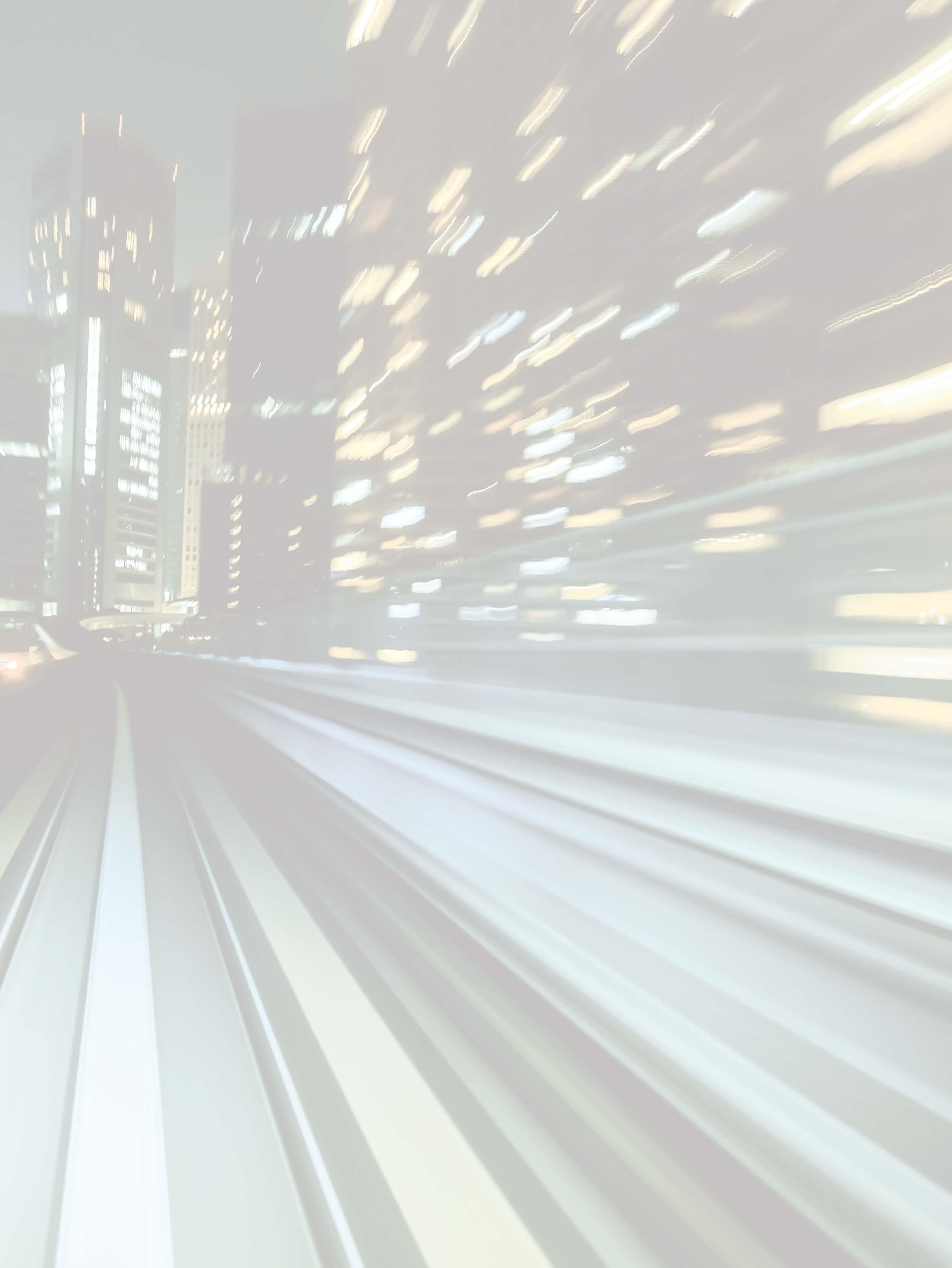
Sun Baocheng – With the continuous development of information and communication technologies, alongside the growing importance of digital transformation within the Brazilian government, we believe that Brazil has opened up new opportunities for digital development. The efficiency of the Brazilian industry, at this moment, improves with the implementation of technologies such as 5G, IPv6, cloud computing, and AI in various sectors.
One good example is the 5G networks, which have been deployed across the country since 2022. With the high transfer rate, low latency and high reliability of 5G, many industries are able to use digital technologies to increase operational efficiency and reduce operating costs. It is a new digital infrastructure being built in Brazil.
There are also efforts by the Brazilian government to provide high-quality Internet access across all regions and achieve inclusive connectivity, in addition to the demand for digital transformation
in the field of livelihoods. These government targets will not only improve labor productivity but will also improve people’s quality of life. Brazil currently ranks second in the world in terms of digital government, but still needs more incentives and, above all, qualified professionals. To do this, it is necessary to think of a long-term plan that includes investments in the training of labor in different domains; the development of new technologies such as 5G, cloud, and AI; and
building capacity in creating case studies and faster expansion or replication.
What actions must be taken now to pave the way for Brazil as a Digital Nation?
SB – For Brasil Digital, Huawei has five suggestions, based on our experience of cooperation with the Chinese government. The first is to enhance an inclusive connectivity network at the national level, including building national wireless and fixed networks. The data network has

INTERVIEW
03 www.huawei.com.br Huawei . 25 years in Brazil
become one of the crucial bases for digital transformation and the development of the digital economy, enabling the ubiquitous circulation of data elements.
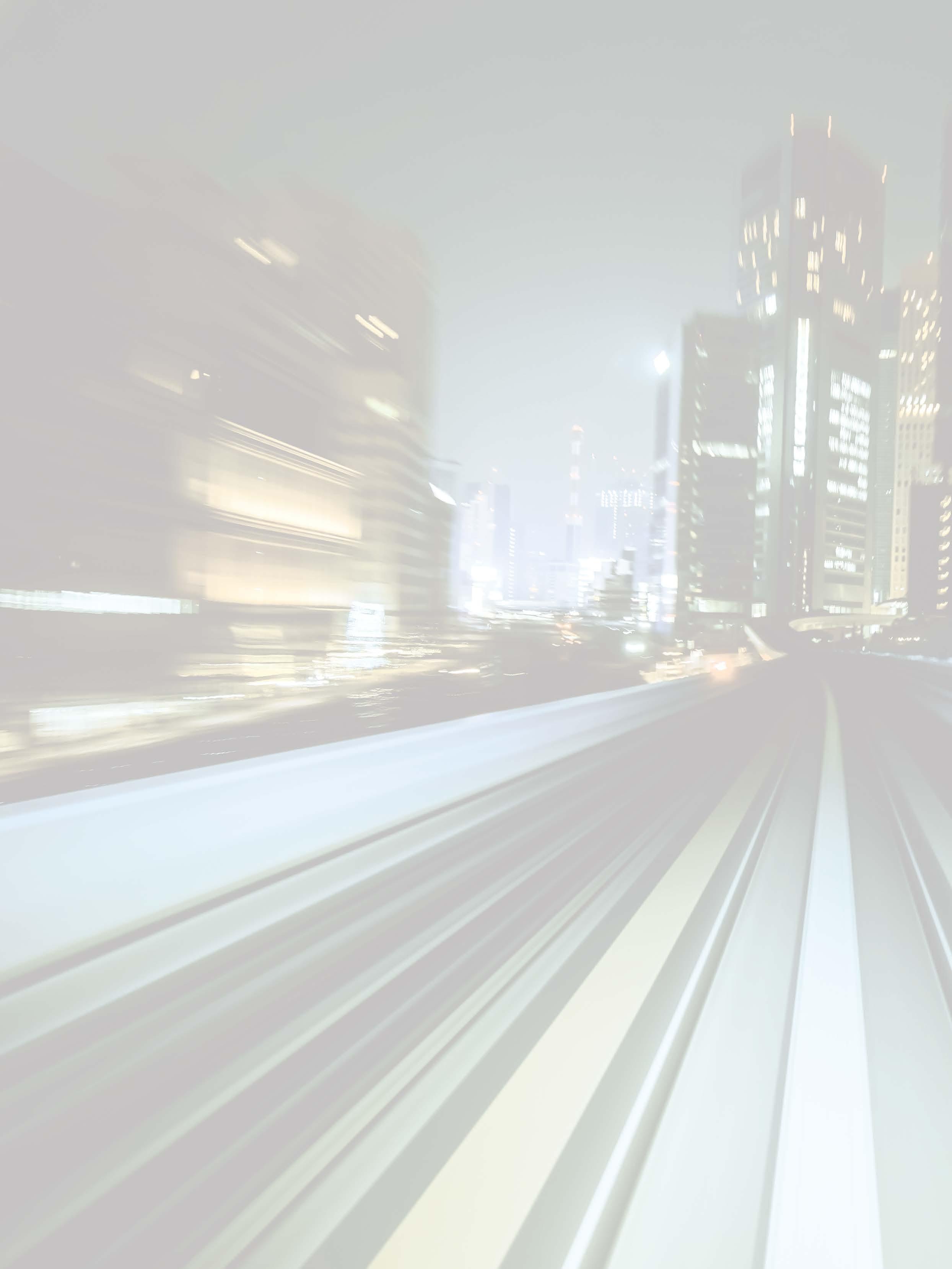
The second is to strengthen digital inclusion, accelerate the implementation of projects in education, health and safety and provide inclusive digital education, digital health, and digital government services, through the application of technologies aimed at improving the digital level of public services. The third suggestion is to encourage and strengthen the development of smart cities and, through the construction of a digital infrastructure, increase the efficiency of urban governance in public safety and transportation, while increasing the international competitiveness of cities, attracting more foreign investment, and promoting development of international trade.
The fourth is to drive the digital transformation of key industries and apply digital technologies to empower thousands of industries. Through a series of incentives, the government is able to guide companies to improve digital thinking and promote overall and full-chain digital transformation in traditional industries, reducing costs and increasing the efficiency of companies, including mining, manufacturing, agriculture, and ports.
The fifth suggestion is to strengthen the construction of data centers and national computing centers, aiming, on the one hand, to increase national sovereignty and data security and, on the other, to transform Brazil into a
computing and intelligence center in Latin America, creating more opportunities to stimulate economic development and promote employment.
How are you and other leaders building Huawei in Brazil for Brazil?
SB – Back in 1998, when we arrived in the country, we established a partnership with telecommunications operators for the installation of the first 2G networks. Today, Huawei is a key player in the deployment of 5G networks in many countries, as well as in Brazil, in partnership with telecom operators and the federal government, being a supplier of network infrastructure equipment and a great encourager of the development of qualified talent in ICTs.
We have a huge infrastructure in partnership with all the major operators in Brazil, which is helping to accelerate the adoption of 5G in the country. We also provide communication services to 95% of the Brazilian population and expect to continue working to bring connectivity to remote locations. To this end, all of Huawei’s business areas operate in Brazil – ICT infrastructure, ICT infrastructure for companies and corporations, cloud services, and photovoltaic energy services.
in the coming years, we expect to increase the participation of these areas, helping Brazil carry out its digital transformation. By 2030, we will already be on the cusp of 6G. Therefore, decisions taken now will have a direct impact on the Brazil’s future development as a connected and digitally inclusive nation. With the continued development of communication and computing technologies and the Brazilian government’s increasing emphasis on digital transformation, Brazil is opening up new opportunities for digital development. That is where Huawei wants to be now and in the future.
Does that include projects in new areas of action, such as clean energy and carbon reduction?
SB – Yes, that includes areas such as green energy and sustainability, which alongside digital transformation, will be crucial in the next decade. To target these two sectors, Huawei is focusing on what it calls Digital Power, which includes developing solutions that increase clean energy consumption and reduce carbon emissions. The focus is on meeting the Paris Agreement, and to do that, we are cooperating very closely with our Brazilian partners.
Digital inclusion projects are also considered strategic. Connectivity and inclusion are important not only for Brazil, but for all countries. Huawei has been working on projects on several fronts: connectivity in rural areas, still underserved in Brazil; school connectivity, aiming to serve the large number of Brazilian public schools without Internet connection; and
“Brazil has always had an open market, with fair and free competition in the ICT sector, benefiting everyone in the digital transformation that is underway in the country.”
04 Huawei . 25 years in Brazil www.huawei.com.br
“By 2030, we will already be on the cusp of 6G. Therefore, decisions taken now will have a direct impact on Brazil’s future development as a connected and digitally inclusive nation.”
health, with the development of solutions that improve care.
Our strategy is to ensure that all Brazilians are able to use the benefits of the Internet, which involves developing smart solutions for these areas.
How was this strategy designed in Brazil?
SB – In these 25 years, Huawei has consolidated itself as a key agent in inclusion, education and sustainability projects. And that happens because Brazil has always been strategic: the country was, alongside Russia, one of the first to host the company’s operations outside of China. Today, we have four business units – Huawei Carrier Network Business Group

(CNBG), Huawei Enterprise Business Group (EBG), Huawei Cloud, and Huawei Digital Power – and over a thousand employees here, 75% of whom are Brazilian, in addition to more than 16,000 indirect jobs generated by operations in the five regional offices, located in São Paulo, Rio de Janeiro, Recife, Brasília, and Curitiba. We also have two manufacturing centers, in Manaus, Amazonas (AM) and Jundiaí, São Paulo (SP), the latter being the first smart factory in Brazil connected with the 5G network; as well as a warehouse in Sorocaba, SP, considered the first intelligent logistics center connected to 5G.
In this quarter of a century, we have also established partnerships with all local telephone operators, resulting in more
than 100,000 kilometers of installed fiber optics. Our partnerships also go beyond the telephony offer: with the operators, we installed the first fiber optics network in the Amazon, connecting 20 cities in remote locations across the rainforest and serving over 4 million people, in addition to leading the 3G, 4G and 4.5G networks in the region.

We also have a strong participation in the field of education. Through the ICT Academy program, we maintain partnerships with over 200 universities and educational institutions that, over the last ten years, have trained over 36,000 talents in ICTs. The initiatives include not only training, but also the inclusion of young talent. Since 2005, the Seeds for the Future and ICT Competition programs have opened the doors of the ICT world to more than 100,000 young people.
We invest here in research and development, driving innovation and helping to develop new local talent for the telecommunications industry. Good examples of this include the R&D partnerships with institutions such as CPqD and Inatel, which help to bring the latest technologies and solutions to Brazil, such as those used to digitally transform the energy, manufacturing, logistics, agribusiness and mining sectors. Today, we are suppliers of the main operators and ISPs in Brazil, delivering infrastructure and technology for their networks, such as fixed and wireless access equipment (GPOn, LTE), transmission (DWDm), and many others.
It is by acting on these fronts that we stimulate the continuous digital transformation of many other sectors. Brazil has always had an open market, with fair and free competition in the ICT sector, benefiting everyone in the digital transformation that is underway in the country. Our efforts are to continue advancing towards Industry 4.0, Agriculture 4.0, Health 4.0, and Smart Cities 4.0.
05 www.huawei.com.br Huawei . 25 years in Brazil
“In these 25 years, Huawei has consolidated itself as a key agent in inclusion, education and sustainability projects. And that happens because Brazil has always been strategic.”
1997
IN BRASIL FOR BRASIL
PIONEERING IN THE MARKET was the task given to Huawei’s first employees when they landed on Brazilian soil. In 1998, the country was undergoing a historic change: commercial Internet was in its infancy, and a new stage began in the telecommunications sector, following the privatization of the state-owned Telebrás. Introducing the technology and winning the trust of customers was the mission delegated to the pioneers of Huawei in Brazil.
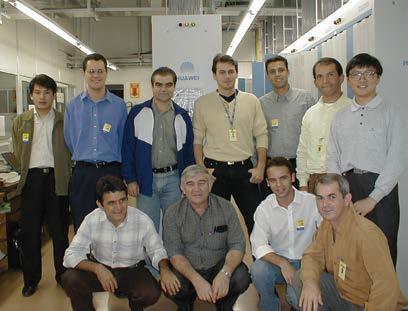
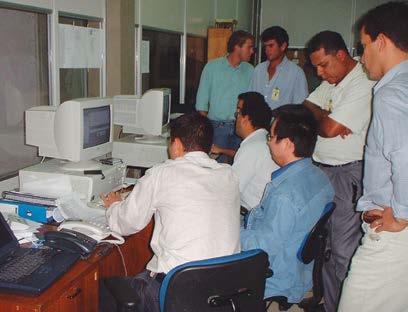

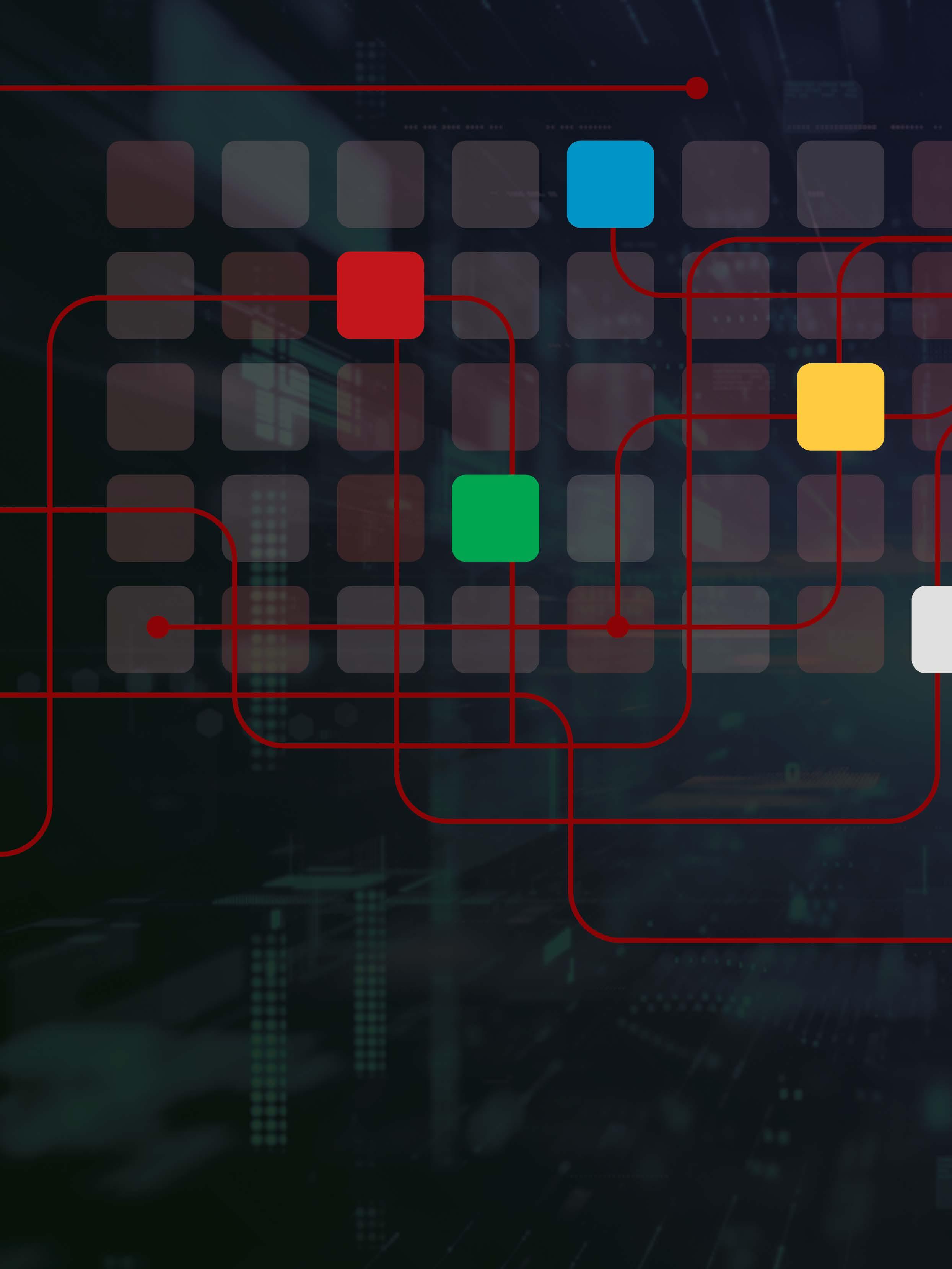
Twenty-five years later, Huawei is a well-known and respected brand. It supplies equipment and infrastructure to all telecommunications operators, meets the needs of the corporate market with ICT solutions and infrastructure, offers public and hybrid cloud services, and has launched itself in the renewable energy segment, providing intelligent solutions aimed at generation, distribution, and photovoltaic energy storage.
Huawei is in Brazil for Brazil. It wishes to become an increasingly important partner in the digital transformation, contributing with sustainable technologies for the Brazilian society and continue
2001
LINhA dO TEMPO
In its 25 years in the country, Huawei has pioneered in markets, proved its innovative culture, and won the trust of customers.
06 Huawei . 25 years in Brazil www.huawei.com.br
Creation of ANATEL. 1998 Huawei’s entry into the Brazilian market. Privatization of the telecommunications sector in Brazil.
First client: CTBC, currently Algar Telecom, from Uberlândia, Minas Gerais (MG).
2003
First project in mobile telephony carried out with former Telemig Celular, in the 2G network.
in its purpose of training thousands of professionals throughout the country.
COMPETITIVENESS, AGILITY AND TRUST
“I participated in the construction and have been here since the beginning, when customers did not know who Huawei was or whether they could trust it – they looked at us suspiciously, which was natural, since we were new entrants in the market. It was a job aimed at building an image and relationships. We built our customer base from scratch,” said Dimas Dias, who joined the company in August 2004 and is now Telephone Account Director at Huawei. Dias notes that much of the democratization of Internet access in Brazil was thanks to the company, “as the costs connection costs and product costs were very high at the time, and we managed to show ourselves attractive and with a differentiators.”
Luiz Gustavo Medeiros Queiroz was the fourth Brazilian hired by the company (read more on page 14). The current vice president of the Enterprise Services area argues that nobody knew about Huawei and the team needed to explore the first customers. The first offerings were for telephone switches and transmission equipment. The environment was propitious, as the country was experiencing
a boom in telecommunications infrastructure. “Huawei was unknown and arrived with the challenge of adapting equipment to Brazilian standards, both alongside the Brazilian Electricity Regulatory Agency (ANATEL) and with customers. Huawei brought this to meet customer requirements much faster than the competition,” said Queiroz. The ability to deliver projects has been its hallmark. “Our differentiator is our ability to deliver a large volume in a short period of time. This caught the attention of major operators. We have large-scale capacity, a product with the latest technology, and delivery with rapid deployment,” he stressed.
The vice president divides the history of Huawei in Brazil into four phases. The first ranges from 1998, when it landed in the country, to 2004, with projects for fixed broadband, mainly. Them, the period from 2005 to 2010, in its entry as a supplier for the mobile data network and the continuity of the contribution with the development of the fixed broadband infrastructure, marks the second phase.
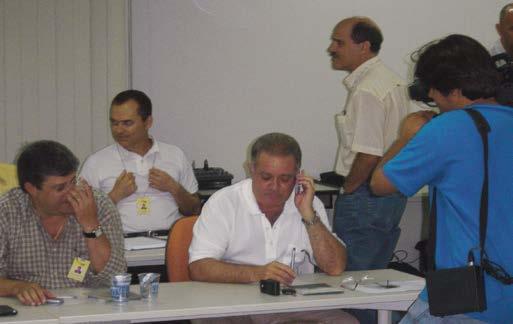
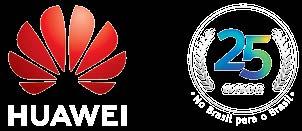
From 2011 onwards, the everincreasing complexity of networks and the shift towards the digital environment began to demand more infrastructure, and customers no longer sought merely access to services, but also quality. This third phase also encompasses
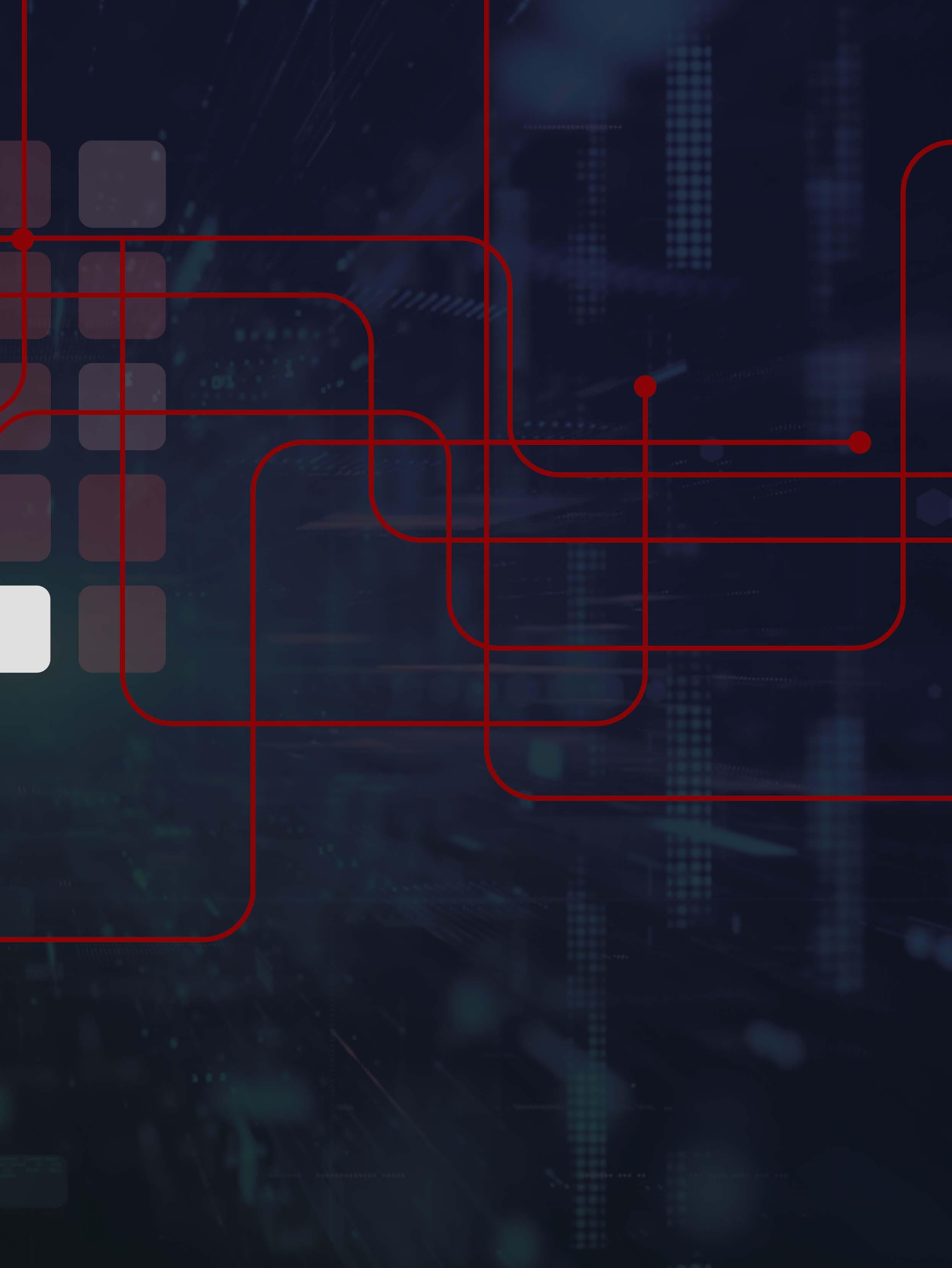
the advent of mobile data and more dynamism. In parallel, Brazil’s network infrastructure grew.

In the period, Huawei went from ten employees, in the year 2000, to approximately 3,000 in 2010, including direct and indirect jobs, when it was already serving all operators. From 2011 onwards, the quest to increase efficiency began, and in this context it began to establish its first supply chain facility, in the city of Sorocaba, in the interior of the state of São Paulo. It comprises a distribution center that is capable of processing the growing demands of customers, which required agility.
Also, at that time, Huawei went through an internal process of process transformation and operational management and began to have offices outside the São Paulo – Rio de Janeiro – Brasília axis. By creating a structure closer to the customers, it built the base that supported the spikes in business volume. This phase extended until 2016, when the company began to lead the market in several projects, such as wireless and data networks. It was also the foundation that established Huawei as a supplier for the major events that Brazil hosted: the 2014 FIFA World Cup and the 2016 Rio de Janeiro Olympic Games.
According to Queiroz, the fourth
2004
2004
2008
First support for 3G technology in Brazil with the exchange of technologies, from CDMA to GSM, on the operator Vivo, in the 3G network.

07 www.huawei.com.br Huawei . 25 years in Brazil
Major project with Brasil Telecom. The telco tested xADSL and found that it delivered more capacity. Almost 1 million ports were sold.
First GSM connection in Brazil, through Huawei equipment, at CTBC (currently Algar Telecom).
phase begins in the period between 2016 and 2017, after the two major events. It was no longer about access alone; the Internet was starting to be seen as ubiquitous, that is, it had to be everywhere and available at any time –with high quality. Users wish to send and receive photos and videos and watch online streams. Increasingly, low latency and high network quality are paramount.

Customers were looking for scalable, sustainable and reliable equipment at the lowest possible cost to deploy the network, leveraging the legacy. “Huawei has embarked on cuttingedge technology, making it easier for telecom service providers to prepare their networks for 4G and 5G challenges – and it started to have another focus: smaller equipment,” highlighted the Vice President of the Enterprise Services Area.
The fourth phase prepared the environment for 5G networks. Now, after
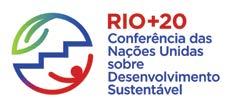

the auction of frequencies and the first network implementations, it is time for a major advance of 5G networks in Brazil, with lower latency and greater data capacity. Coupled with them are the solutions in the Internet of Things, Industry 4.0, and private networks, as well as a smarter infrastructure. The ecosystem becomes much more complex, with new agents, requiring a system is that is increasingly open.
One of the company’s differentiators is closely linked to strong investments in research and development (R&D).
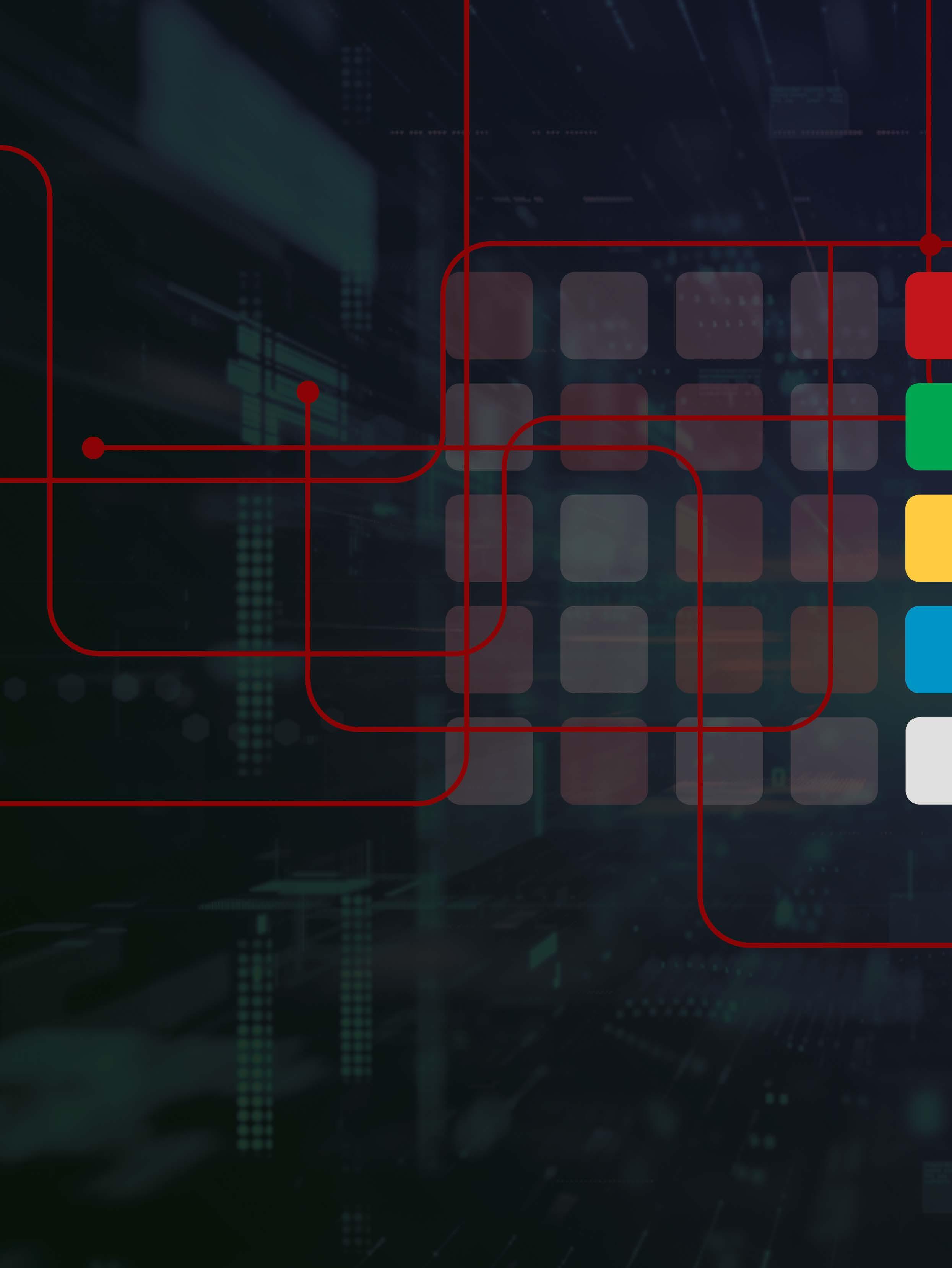
“To bring the best ICT solutions, we are constantly innovating the infrastructure to bring 5G and 6G networks. We conduct research to launch new algorithms and materials so that operators can benefit from solutions that have more benefits at a lower cost,” noted Carlos Roseiro, Director of Integrated Solutions at Huawei. Today, 56% of employees

worldwide are focused on R&D.
“Huawei has transformed the telecommunications industry in Brazil. The first lever was privatization. The second lever was the entry of Huawei, which arrived in fixed broadband, introducing a sophisticated technology that is technically comparable or more advanced than what was previously used, at more competitive prices,” stressed Marcio Costa da silva, Director of the Claro account at Huawei. “From there, we entered several other parts of the network, with the advent of 3G, another big leap, being marked by the company’s extensive participation,” he added.
PAVING DEVELOPMENT
At the beginning of the local operation, Huawei aimed to provide solutions for fixed broadband, contributing to the development of the sector and for the Internet to reach a

“In these 25 years of Huawei’s operation in Brazil, we have celebrated a long-term partnership, with the goal of always innovating and always offering the best service to our customers, supporting the country in digital inclusion. From the arrival and consolidation of 4G networks to the most modern projects with 5G, the history of accomplishments with Huawei is extensive and places TIM as a protagonist in the telecommunications market in the country.”
08 Huawei . 25 years in Brazil www.huawei.com.br
Alberto Griselli CEO of TIM Brasil
2012 First support for 4G technology at Rio+20 - United Nations Conference on Sustainable Development.
2011 Opening of the Huawei Logistics Center in Sorocaba, SP.
2009 Huawei starts its investments in 5G research.
2011 In Brazil, Huawei becomes the 2nd largest mobile technology and wireless network provider.
2014 Support in the World Cup. Communication guarantee for Brazilian operators during the event.
greater number of Brazilians. After all, no Internet could develop without an adequate infrastructure. “The focus was on fixed broadband, as it was already selling abroad, and high-speed optical transmission networks. We were gaining market share, with customers seeing that our products were good, with fewer defects than those of competitors, and learning that Huawei was flexible in terms of adjustments, with an R&D team that developed quickly,” said Huawei’s Director of Cybersecurity and Solutions, Marcelo Motta, who joined the company in early 2002.
Our first customer was CTBC (currently Algar Telecom), from Uberlândia, Minas Gerais. Following that, a major project with Brasil Telecom, in 2004, represented a milestone for the company in fixed broadband. The telco tested xADsL and saw that it delivered greater capacity.

Almost 1 million ports were sold. Soon after that, Telefónica (at the time, Telesp Celular) became interested.
In the fixed network, for a long time, Huawei has promoted the FTTH (fiberto-the-home) technology, in which the optical fiber leaves directly from the company’s central office that provides access and goes to the customer’s home. The launch of broadband plans with a speed of 1 Gb/s represented a turning point in the past and the expectation that the turning point will be 10 Gb/s in the near future.

After gaining visibility in fixed broadband, Huawei began to make great steps in mobile telephony. In 2003, it had the opportunity to supply equipment in the wireless area, and the first project in mobile telephony was carried out at the former Telemig Celular, in the 2G network. “It was a key moment, a very big milestone, as we shifted from the

transmission area to the wireless network, and Huawei began to be seen as a major supplier for the Brazilian market,” recalled the company’s Vice President, Luiz Gustavo Medeiros Queiroz.
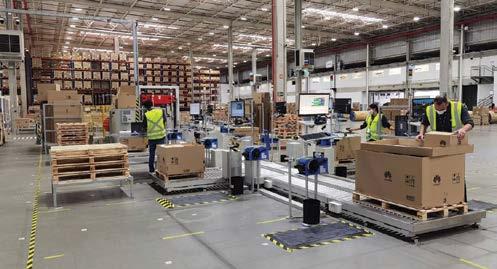


Between late 2004 and early 2005, another mobile telephony project, this time at CTBC (now Algar Telecom), served to prove to the market that the product worked well and that Huawei was undergoing quick development, delivering adaptations.
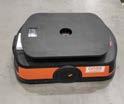
The big turning point came in 2006, when a project shone the spotlight on Huawei: the switch from the CDmA technology to GSM at the operator Vivo. “It was a transformative project, taking Huawei to another level, because, until then, Huawei was well developed in the fixed area and needed a major project in the mobile area,” attested Dimas Dias. “This project revolutionized the entire mobile sector at that time, as the 3G
2016
Support in the Olympic Games. Supplier of communication equipment for Brazilian operators during Rio 2016.
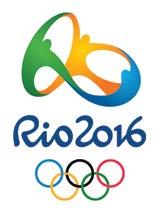
“Huawei has been a partner of Oi for many years, actively contributing to our technological and commercial development. It has been an exchange of knowledge to bring innovative products and services, mainly in the fiber optic segment. Huawei is an important partner in achieving our mission to expand connectivity, bringing digital life to everyone, always with the main focus on customer experience.”
09 www.huawei.com.br Huawei . 25 years in Brazil
Rodrigo Abreu President of Oi
2015 Launch, in Brazil, of the Seeds for the Future program, which provides training to young people.
2017 Claro launches 4.5G with Huawei technology.
2017 Huawei brings to Brazil its expertise in solar energy.
2019 Construction of the first 5G smart warehouse in Latin America, in Sorocaba, SP. Huawei’s 5G Smart Warehouse improves efficiency by 25% and reduces logistical timing by 30%.
network built by Vivo was bigger than that of all the telcos together. It was a turning point in mobile coverage with Huawei’s infrastructure. It was truly remarkable,” added Carlos Roseiro.
In the following years – 2007 and 2008 – Huawei joined other major operators, beginning to have a strong presence in the supply of network and wireless solutions. Since then, the company has grown its share of telcos, now having all of them as customers.

CHALLENGES OF
700 MHZ, 4G, AND 5G
Bruno Alvarenga, Executive Director of Mobile Solutions at Huawei, joined the company as soon as the 700 MHz spectrum was released, which was a difficult topic for operators, as they could face difficulties in deploying new antennas and in new locations. With the release of the 700 MHz band, networks

began to be deployed in 2015. “Along with the 700 MHz band, we were creating new technologies and new industry standards, and in 2017, after having developed some new antennas, we achieved the milestone of the 4.5G network,” said Alvarenga, who actively participated in this process.
In March 2017, 4.5G in Brazil became a turning point. “We also launched a new standardization, which was the MiMo 4x4 solution, as well as frequency aggregation. We established a new parameter for the industry,” noted Alvarenga. “Claro was the first company to launch 4.5G and, alongside Huawei. A year later, Huawei already had 5G on the agenda, and information about this new technology began to gain weight among employees, who needed to understand that it was a very different architecture from the previous ones,” detailed Carlos Roseiro.
The effective launch of 5G to the market would come much later, in mid-


2022, when Claro commercially launched its Huawei-powered 5G network, in Brasília. TIM would follow it, offering the service in Curitiba. “Huawei is the vendor that most contributes to the deployment of 5G in Brazil,” highlighted Roseiro.
Before the fifth generation, there were other advances. In 2019, Huawei made the first 8K transmission in Brazil via 5G, during a demonstration with a prototype equipment at the Futurecom fair. Also, before the deployment of 5G, the world experienced the COVID-19 pandemic.
In 2020, Huawei entered into partnerships with operators and suppliers to bring more coverage to regions with a lower concentration of Internet accesses, something crucial to get through a period in which it was mandatory to stay at home. “Huawei, as a private company, had to reduce its profit margin, increasing its cost, to ensure the development of that
2019
launches its first 5G site in Brazil, with connection speeds above 1 Gbps.
2019 First 8K transmission in Brazil, via 5G, during Futurecom.

“For us at Algar Telecom, it is gratifying to follow Huawei’s 25-year history in Brazil. We were the company’s first customer in the country, and it helped us implement not only our fixed and mobile networks, but also various items in our service portfolio. ICT infrastructure plays a key role in digital inclusion, and Huawei’s history has contributed in many ways to bringing innovation and a technological experience to the various ‘Brazils’ that we have.”
10 Huawei . 25 years in Brazil www.huawei.com.br
Jean Borges President of Algar Telecom
2021 Launch of the cybersecurity laboratory in partnership with Inatel.
2020 Huawei and Vivo launch the first 5G+AI+IoT Logistics Center, in Sorocaba, SP.
Huawei
2019 Launch of Huawei Cloud in Brazil.
2020 Partnership with operators and suppliers to expand access to connectivity during the COVID-19 pandemic.
X-ray
• Five offices in Brazil: Brasília, São Paulo, Rio de Janeiro, Recife and Curitiba
• Two production centers and a training center
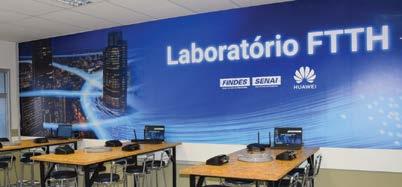
• Investments of R$500 million in the last five years
• More than R$6.3 billion in local purchases and more than R$7.1 billion in taxes
• Creation of over 16,000 direct and indirect local jobs
• Elected by the Top Employers Institute, a global authority in the certification of excellence in people management, ranking among the best employers in Brazil for three consecutive years: 2020, 2021, and 2022
• Service to the main operators in Brazil, covering 95% of the Brazilian population
• Construction of the first 3G, 4G, 4.5G and 5G networks. It currently has approximately 5,000 5G sites. Rio de Janeiro, Curitiba and Brasilia were tested as cities with full coverage of 5G sites
• Support for operators in building the first fiber optics network in the Amazon Region, connecting 20 cities and 4 million people
• Cooperation with operators in the Northeast Region to help local residents in remote areas with a population of less than 10,000 and support local residents to access the Internet at a reasonable cost
• Participation in connection project for 1,800 elementary and secondary state schools in Bahia
• Construction of a campus network and connection of 1,500 elementary schools in Goiás
“In these 25 years in Brazil, Claro and Huawei have often been together on the journey towards technological evolution. Because we share the same mission of connecting people and companies, we act as partners at various times – both in consolidating the excellence of Claro’s networks and in creating solutions for the future, with innovative cases in agriculture and industry. We would like to congratulate Huawei on its anniversary and hope that it may continue to support Brazil in its challenges of connectivity.”
2021
Launch of the pilot project with the government of Goiás to use 5G+AI+cloud to improve productivity. It is the first smart agriculture project in Brazil.

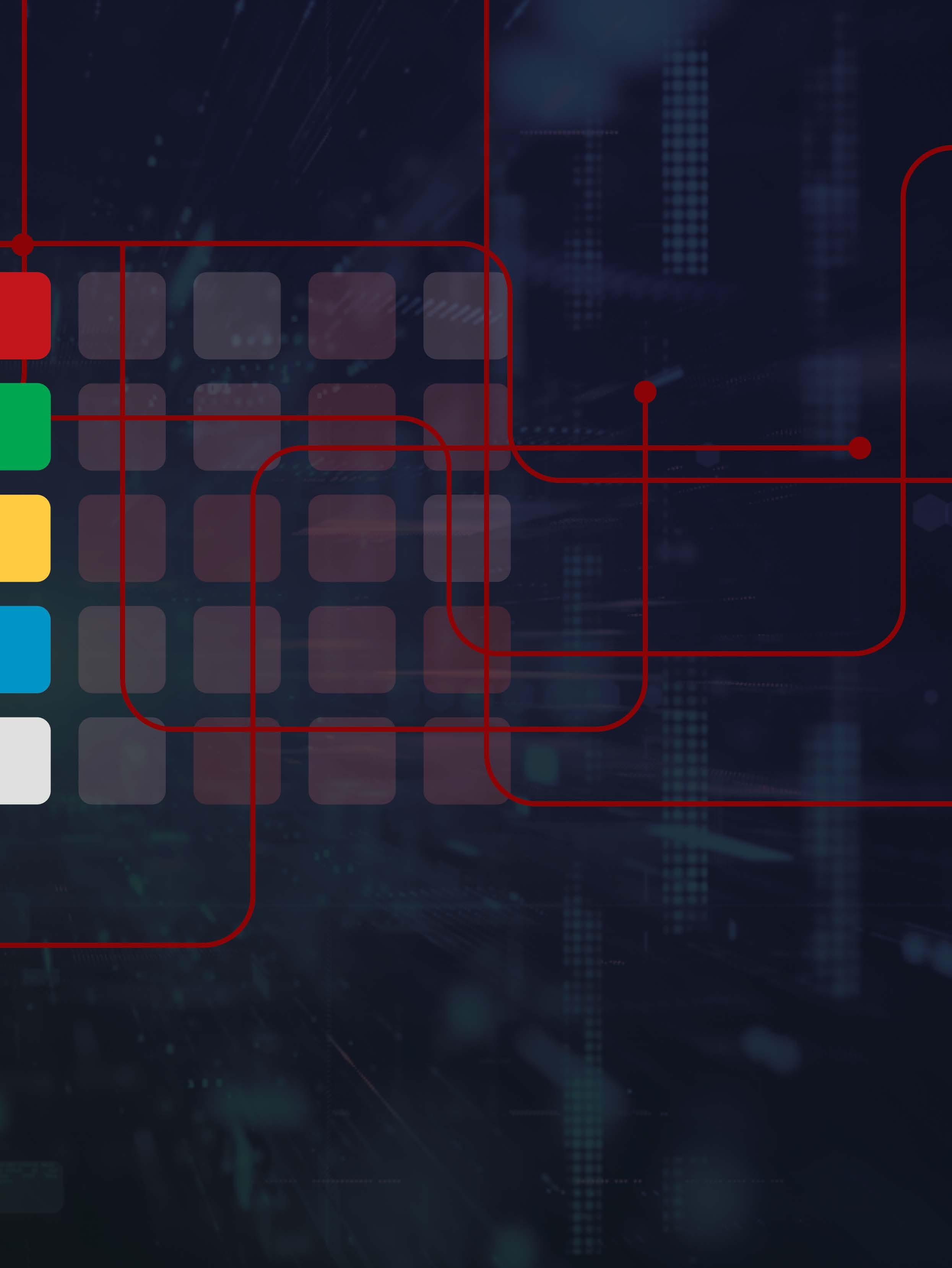
2022
Opening of the first smart factory in Brazil (5G+IoT, AI, and Cloud) and launch of AI and 5G white papers in Brazil.
2022
Claro launches 5G networks in Brasília, followed by TIM, in Curitiba, with Huawei infrastructure.
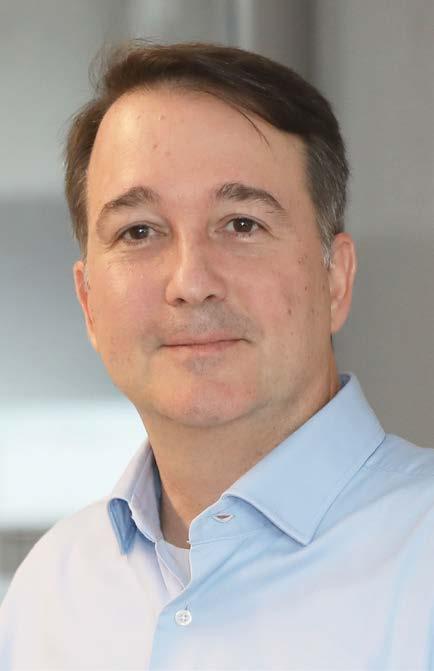
2023
Huawei cooperates with seven of the leading ICT-related institutions in Brazil to build 16 training labs and helps over 600 students complete courses through the “Nem-Nem FTTH Training” program.
Brazil

11 www.huawei.com.br Huawei . 25 years in
2021 Launch of the Women in Tech program.
Andre Sarcinelli Director of Engineering at Claro
ecosystem. We had to take a step back to help society take two steps forward,” reflected Alvarenga.
As of mid-2022, 5G networks began to pop up across the country, still at a slow pace, but always with Huawei among their infrastructure providers. In 2023, there is a lot of market to cover. Alvarenga predicts that infrastructure deployment will continue until 2025, aiming to reach massive 5G coverage, including in cities where there were limitations before. “As from 2025, we will start talking about 5.5G, which is the use of different frequencies to increase the spectral band. The goal we set is to reach 10 Gb/s and bring a new concept to the industry, called sensing,
which seeks to use the telecommunication network alongside the entire infrastructure of a city. Our goal is to achieve the launch of 6G by 2030,” anticipated the Executive Director of Mobile Solutions.
Alongside the evolution of networks, Huawei has focused on the development of technologies such as Network Functions Virtualization (NFV) and Software-Defined Networks (SDN). Marcelo Motta, who had the opportunity to work with them at their headquarters in China, says that the change represented a milestone, as the telecom infrastructure was highly hardware-based. “We brought virtualization technologies into the telecom area, which is the foundation of cloud computing. First,
A BIG BET ON NEW MARKETS
Company invests in the corporate segment, in the cloud, and in renewable energy

WITH THE ACHIEVEMENTS in the telecommunications sector, Huawei Brasil has followed the global movement and entered the corporate market selling digital infrastructure and cloud computing, as well as entering, more recently, the energy area.
“Today, the carrier area is consolidated globally and in Brazil; and Huawei is looking at new approaches, in order to expand its presence in the enterprise, taking its products to the B2B segments, as well as expanding its participation in the public cloud,”
highlighted Marcio Costa da Silva, Director of the Claro account at Huawei.
“It is also positioning itself in the field of renewable energy. Brazil is experiencing a crucial moment of change in its energy generation matrix, and Huawei has been working very hard to position itself as a leader,” he added.
Announced in February 2017 in China, Huawei Cloud was launched in Brazil in November 2019, focusing on direct sales to the corporate market. Until mid-2019, the sale of cloud computing took place through a partnership with Vivo, under
we worked with NFV and SDN for telecom networks and then decided to act globally with cloud computing using the expertise we had with telecom,” he said.
Sergio Battaglia, senior managing consultant, joined Huawei in 2012, already with 20 years of experience in the sector. He accompanied the entire 4G cycle, when there was a consolidation of the mobile service as part of people’s lives in many day-to-day applications.
“The fact is that 4G exploded the demand for digital services, and now 5G is elevating that to a quest for richer experiences,” he noted. At the same time, fixed broadband has evolved on top of fiber optics, leading to a change in the
the name Vivo Open Cloud. “The launch of Huawei Cloud was a milestone. In these four years, we have grown a lot, both in infrastructure and in the number of services available, mainly in the area of artificial intelligence,” noted Fernando Penna, Manager of Cloud Business Development at Huawei.
He considers that three verticals have been particularly important: the e-commerce ecosystem, the financial market, and the public sector.
“Cloud is so important that all business units are challenged to sell the Huawei Cloud, regardless of whether it is for the operator or the enterprise market. Everyone has the goal of selling cloud, which is the future of the company,” justified Penna.
Airton Melo, Director of Sales and Business for the Enterprise Market at Huawei Brasil, with a focus on the financial market, says that, in 2016, Huawei began offering digital infrastructure to large government banks, including backbone, large
12 Huawei . 25 years in Brazil www.huawei.com.br
level of connectivity in homes.
While, following its arrival, Huawei had to break into the market, today, the company ranks among the leaders in the Brazilian market: all operators use its solutions and/or have some connectivity running on its platform. It has established itself as a leader not only in terms of innovation, but also reliability.

Renewable energy, cloud computing and the advancement of artificial intelligence are among the technologies that will pave the way for Huawei over the next 25 years. The Chinese giant is well positioned for a future that should change – to a massive degree – the concept of everything we have today.
routers, and private networking. With its own backbone, he explains, banks do not depend on an operator to service branches.
Starting in 2017, Huawei brought the SD-WAN technology to banks so that they could intelligently detect the applications that require the most data and identify the best link for each of them. In the following years, Melo argues that there was a great adoption of WiFi solutions, with major banks offering guest networking to the clients. “From 2019 to 2020, a large bank approached us because it was going to revolutionize the contact center. We competed with an intelligent contact center solution 100% cloud-based and featuring AI, which allowed agents to be at home. We were awarded the contract with our cloud,” he reported.

Melo bets that, in the coming years, 5G will gain more relevance for the financial business area, because it improves – to a massive degree –the application experience. He also
highlights the opportunities that should come with 5G indoor and 5G networks connected to the Internet of Things.
According to Marcelo Motta, Director of Cybersecurity and Solutions at Huawei, the future is green, concerned with the energy issue and the safety of the environment, as the trend is towards an increase in the number and complexity of connected things.
In addition to banks, Huawei is a government supplier. With a vast career in IT, Ricardo Mansano joined the company in 2017 with the aim of promoting the area of government solutions. “Huawei has a vast product portfolio, and the big challenge in the area is to bring all these boxes of products together to help customers solve business problems,” said the company’s CTO for the Public Sector. On this journey, the main milestones are linked to the transformation of the product box vision into great solutions.
“When we go to customers, we have to look at their problem as a whole and
understand the whole to be able to design the best solutions together with them,” detailed Mansano, who participated closely in the digital transformation project of the government of Bahia.
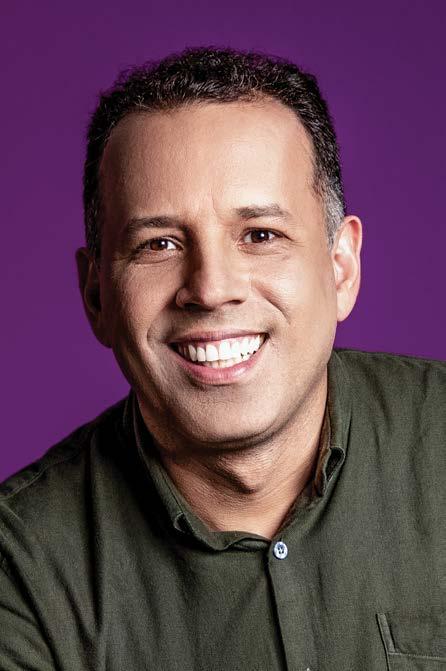
He argues that the goal of the government of the state of Bahia was to modernize and have safer public areas. The project, called “videopolícia” (“videopolice”), is about three years old and started small, with a pilot, later evolving. Today, all police officers have a high-performance artificial intelligence and connectivity solution.
Mansano explains that the project is a great achievement but points out that the main thing is that governments have begun to understand how important connectivity is for social inclusion.
“The big milestone that we are experiencing now is the priority of connectivity in remote areas to then bring intelligence,” he commented. Today, Huawei has 80% of the federal ministries and 60% of the states as clients in a wide variety of solutions.
13 www.huawei.com.br Huawei . 25 years in Brazil
“Huawei shares the goal of driving digital transformation in Brazil, which will benefit society as a whole. We move forward, with partners like Huawei, to bring the best Internet infrastructure to people and businesses, facilitating access to connectivity and excellent services.”
Elmo Matos Director of Network Planning at Vivo
WHO MADE AND STILL MAKES THE 25 YEARS
TALENTS ARE the foundation for the solid construction of any company. When Huawei landed in Brazil 25 years ago, it occupied a small office in Campinas, São Paulo. “It was a house and we were seven people, mostly Chinese. our office started there,” said Luis Gustavo Medeiros Queiroz, currently Vice President of the Enterprise Services Area, who is completing this year 23 years at the company. Dimas Dias, Director of the Telefónica account at Huawei, and Marcio Costa da Silva, Director of the Claro account at Huawei, also joined the company in its early days and accompanied its growth, performing various functions.
In common, both veterans and newcomers Elise Machado and Matheus Carrijo, both hired after an internship period, identified with the company’s principles: open collaboration with partners in the telecommunications ecosystem, lasting value for customers, professional training, and innovation. The talents mentioned represent a little of what Huawei Brasil is all about.
A WITNESS OF THE EARLY DAYS
The current Vice President of the Enterprise Services Area, Luis Gustavo Medeiros Queiroz, was the fourth Brazilian to join Huawei, which, until then, had a majority of Chinese people. The year was 2000 and he, a recent graduate of the National Telecommunications Institute (Inatel) and an intern at another company, learned about the vacancy through an advertisement on the back cover of the specialized magazine RTI – Redes, Telecom e Instalações. “I was going to be hired by the company where I was doing my internship, but I ended up opting for Huawei, which I joined in December 2000,” he recalled.
Brazil had already privatized telecommunications and the market was booming. “Nobody knew about Huawei, and we were there to explore the first customers,” said Queiroz, at the time a recently graduated engineer with knowledge in telephone exchanges. in Brazil, the company offered switches and transmission equipment and faced the challenge of adapting the products to Brazilian standards. “Huawei brought this practice [to the market] of meeting customer requirements at a much faster pace than the competition,” he noted.
Queiroz witnessed how Huawei actively participated in the growth of the country’s telecommunications infrastructure, both mobile and fixed.
He accompanied the closing of contracts, such as that of CTBC (predecessor of Algar Telecom), the company’s first customer, and the Vivo project, in 2006, when the operator changed migrated from the CDMA technology to GSM in the implementation of its 2G mobile network.
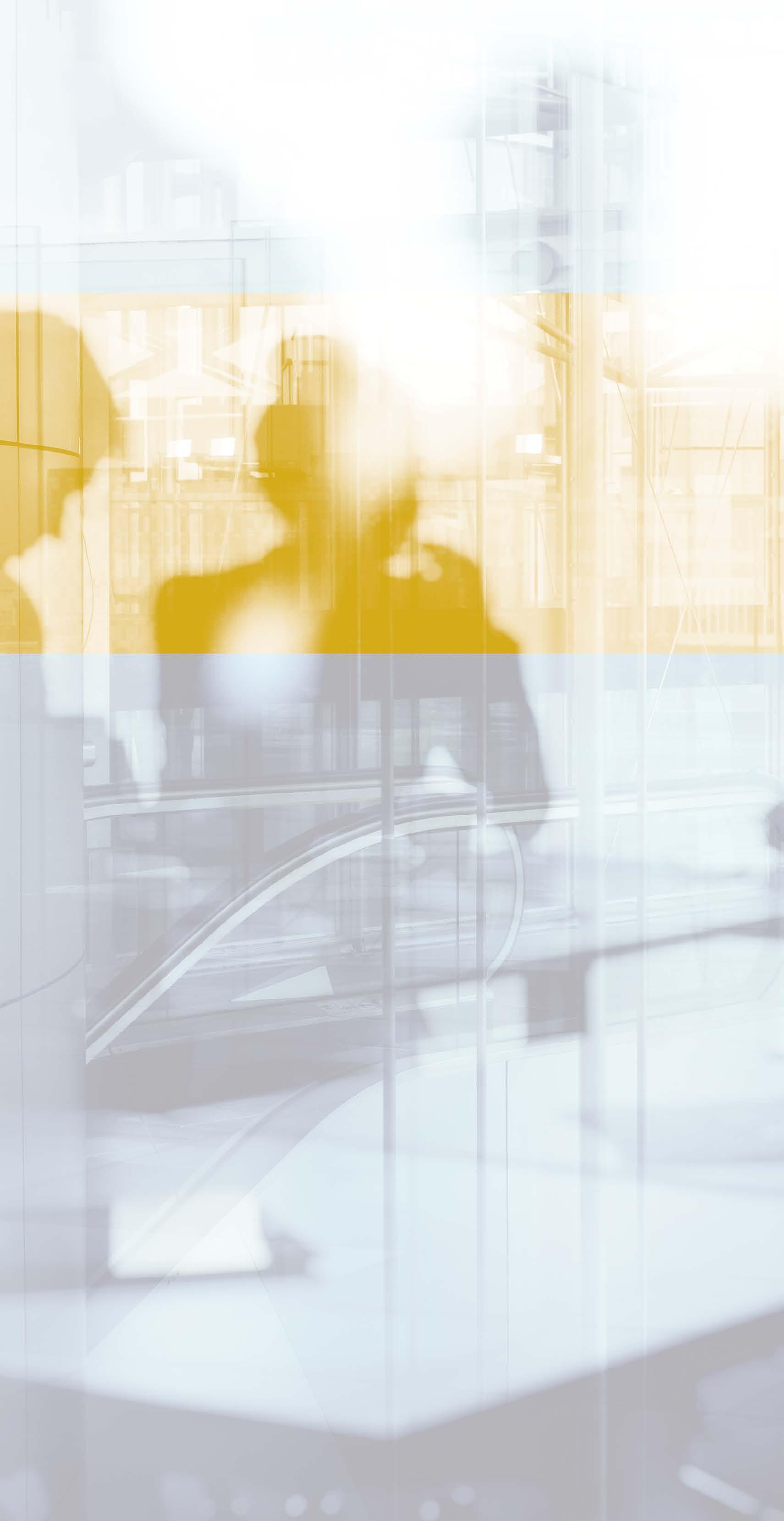
Luis Gustavo Medeiros Queiroz argues that he had a dynamic career during this period. “I really like challenges, and at Huawei, we have many opportunities to grow. The organization drives us forward. Each day is not like the last, and there are countless possibilities,” he reported. Therefore, a necessary feature for employees is to be open to

TALENTS
Many people participate in building Huawei’s success in Brazil – with some virtually from the beginning and others who have been with the company for a short time. With a diversified profile, active in several areas, they help us do the best for customers.
14 Huawei . 25 years in Brazil www.huawei.com.br
this movement and to be able to adapt to meet the different demands that may arise. From his beginnings as a fixed network engineer, Queiroz went through several departments, in different positions. He served as Director of Accounts, directly serving customers, and as Director of Purchasing. He is currently Vice President of an area created in 2011 to serve companies that are not telecommunications service providers – quite a change for someone who had made a career working with operators. “One of the great challenges of the past is that we sold to operators and thought about how to sell the solutions to banks and other companies. We began to enter the enterprise world strongly. What we dreamed of years ago is now a reality.”
A CHOICE THAT WORKED
Dimas Dias has held the position of Director of Accounts for five years, having worked in several areas during his 19-year career at Huawei. “It is a highly innovative experience, always with new challenges,” said the 47-year-
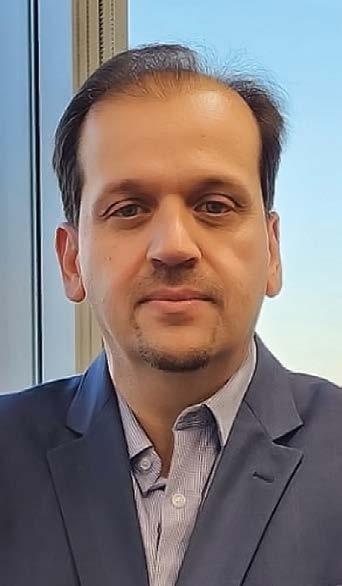
old executive, who joined the company in August 2004, when it was still very small. Graduated 24 years ago in Electronic Engineering at Inatel, he worked at two other technology providers and at a European operator before joining Huawei. His path, however, had already crossed with that of the Chinese giant. “My story is old, because, in late 1998, I participated in a selection process for another company, and there, I had my first contact with Huawei, which was a partner,” he recalled.
Dias joined the company as a product manager for the fixed network. The first broadband connections with optical transmission took place, and Huawei was entering this market.
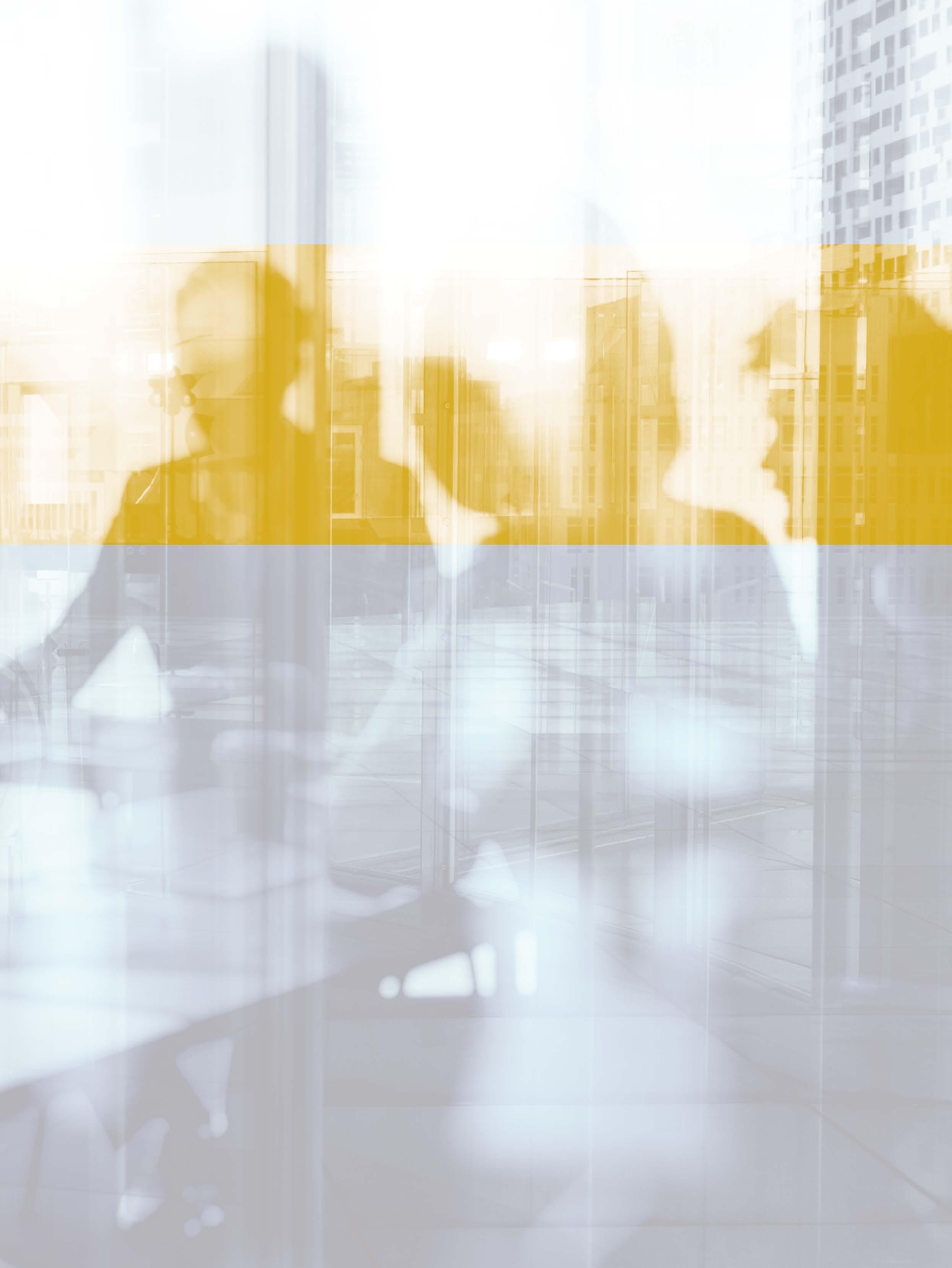
“I started working in the Brasília office, with Brasil Telecom as a client. Later, I also served GVT and smaller clients,” he said.
The executive argues that Huawei has always been different in terms of products and technologies, based on a culture of great focus on customer
service. “Huawei was building a name and contributed a lot to the democratization of Internet access, as connection costs were very high at that time, and the company managed to be attractive with a technological differentiator.”

About his career, Dias notes that, as soon as he joined, he understood that the company was very meritocratic. “if you contribute, you get recognition. This attracted me a lot at the time, because I saw the projection of development in the company – I saw that if I contributed, I would grow alongside it, and that is what happened.” Dias argues that he was always challenged and had the opportunity to participate in conferences, give presentations and lectures, and learn more about Chinese culture.
He went through the products area, moved to São Paulo to take charge of the fixed network, initially covering Brazil and then Latin America and later being in charge of a large account, and since 2011/2012, he has been working

“I really like challenges, and at Huawei, we have many opportunities to grow. The organization drives us forward.
Each day is not like the last, and there are countless possibilities.”
Luis Gustavo Queiroz, currently Vice President of the Enterprise Services Area, who
joined the company in December 2000
“Huawei was building a name and collaborated a lot for the democratization of Internet access, as connection costs were very high at that time, and the company managed to be attractive with a technological differentiator.”
15 www.huawei.com.br Huawei . 25 years in Brazil
Dimas Dias, currently Director of Telefónica account, who joined the company in August 2004
as
intern
for Telefónica. “I learned something in all areas. I never attached myself to any position – the focus is on contribution.”
Looking back, Dias says that he would do it all over again. “When I left the old company to join Huawei, my former boss commented: ‘Are you sure? it is a new company – it cannot compete with our company, which has an established brand. Are you sure? Because I think you will regret it.’ I said yes, arguing that it was in line with what I expected,” he revealed. “At the time, it was a gamble, but as I worked I saw that it was going to thrive and that it is a company with a very strong focus on research and development and very consistent in what it does,” he said. The choice proved to be the right one, as the former company declared bankruptcy.
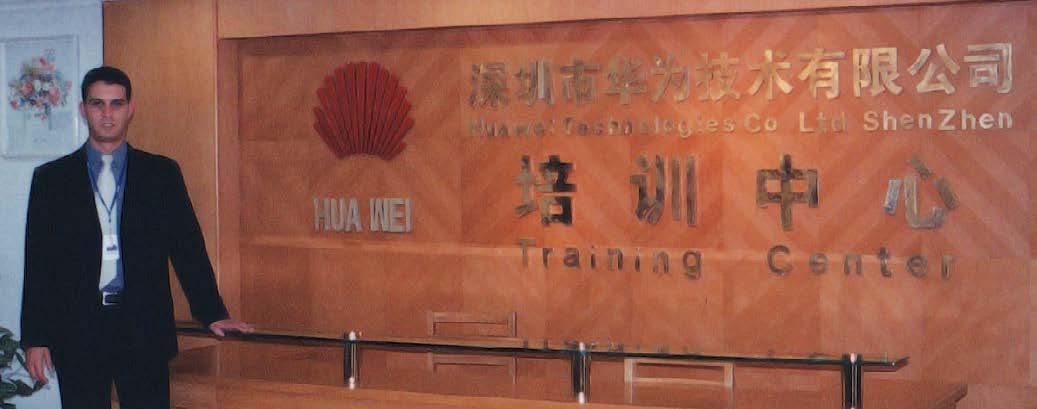
OPPORTUNITIES TO GROW
The year was 2001 and Marcio Costa da Silva was evaluating the course of his career. The first ten years of his professional life had been spent in aftersales. He subsequently spent

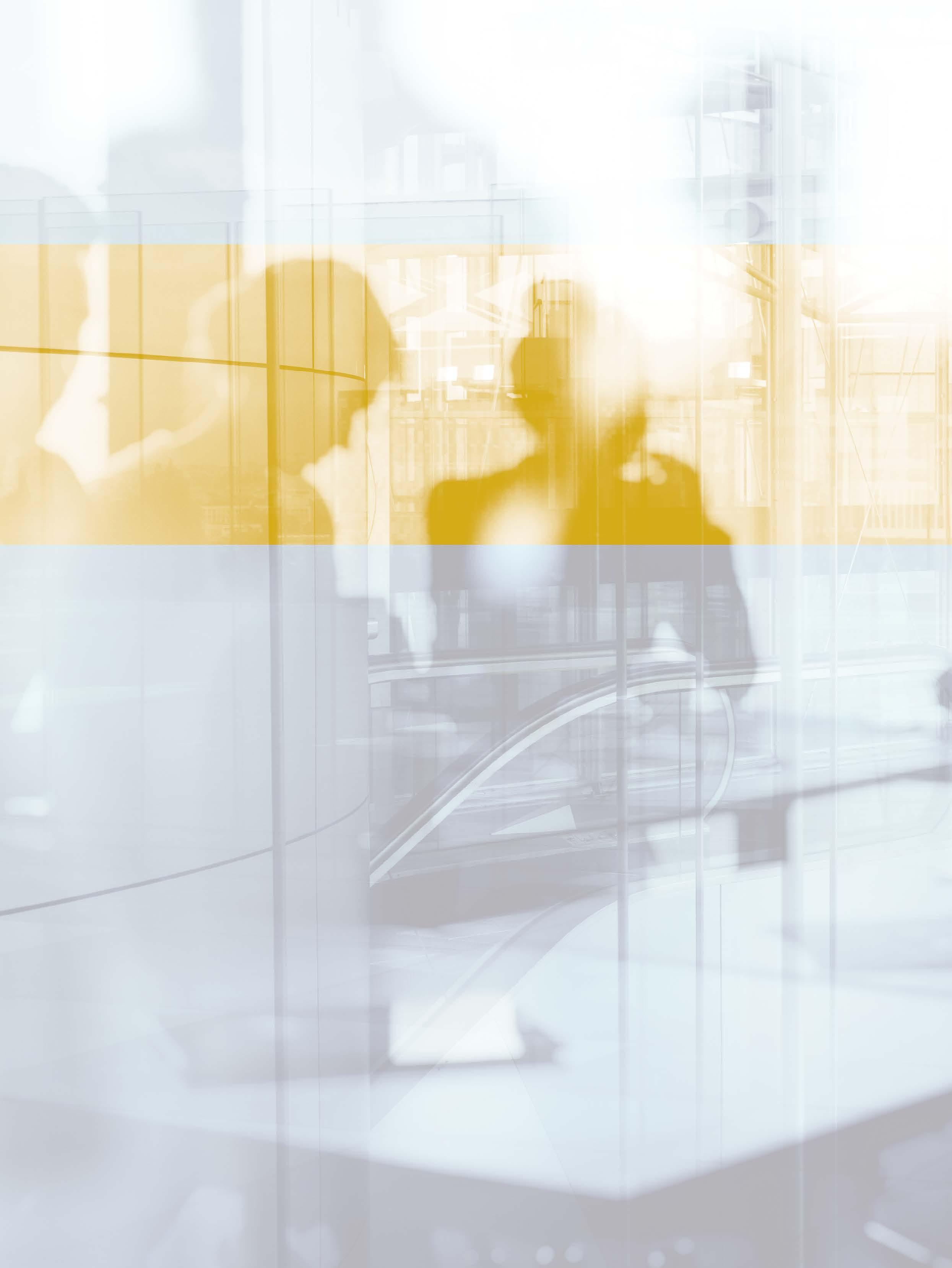
two years in the maintenance area and then wished to work in sales, but there was no way to make that transition at his former company. Huawei was recently in Brazil and was looking for professionals. “They opened the door and gave me the opportunity to develop myself, even without having all the skills,” said the current Director of the Claro account at Huawei.
Silva notes that he made a radical change, leaving a consolidated company for a start-up; from aftersales to sales; and from São Paulo to Rio de Janeiro. He moved to another city when Huawei began to expand geographies within Brazil. “I made three radical changes, and by November 2001, I had all the insecurities in the world, but in May 2002, after almost six months with the company, I had the opportunity to take my first trip to China. It was there that I was absolutely certain that I had made the right change, as China was showing itself to be a country ready for the future in technology and telecommunications,” he highlighted.
An engineer by training, Marcio Costa da Silva started out in the sales area as a solutions manager. He served in various positions and worked with different products. “Leadership identifies potential and makes room for growth. This is a feature of Huawei,” he said. In 2006, he became Account Director at Embratel. “It was a very large account, and we had several success stories: we implemented the first newgeneration fixed network, carried out number portability, and swapped the CDMA network in Brazil,” he recalled. He then decided to learn about other sales philosophies and chose to seek experience in cultures other than Chinese. “I felt I needed contrasts. I worked at other companies; I spent four years outside Huawei, two at each company, and got to know other ways of doing business. I was sure that the work with sales at Huawei was the best scenario. I came back in 2016 to develop business on the Oi account and stayed there until the operator’s recovery plan was approved,” he reported.
“The values that, back then, I noticed within Huawei, throughout my career, have never changed. One is putting the customer at the center of everything and another is dedication.”
Marcio Costa da Silva, current Director of the Claro account at Huawei, who joined the company in November 2001
“The company opens up very interesting paths for my development and offers a complete training platform.”
16 Huawei . 25 years in Brazil www.huawei.com.br
Matheus Carrijo, who joined the company
an
in mid-2021 and is currently a Sales Executive for the Public Sector
* Photo from Marcio Costa da Silva’s personal collection with him at the Huawei Training Center in Shenzhen (2002)
In 2018, two more changes happened: he was transferred to Claro’s account and returned to São Paulo. “The values that I noticed back then within Huawei, throughout my journey, have never changed. One of them is putting the customer at the center of everything and another is dedication. You have to identify with the culture,” he said.
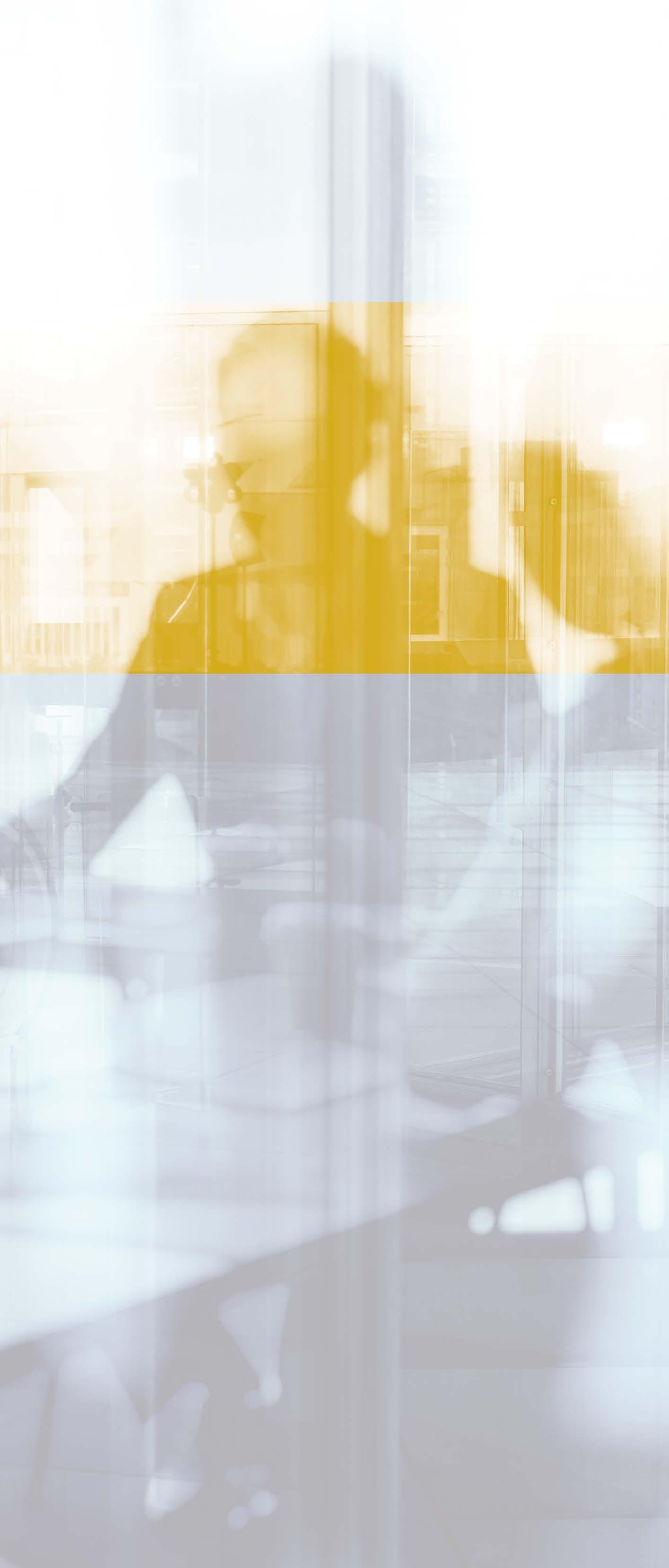
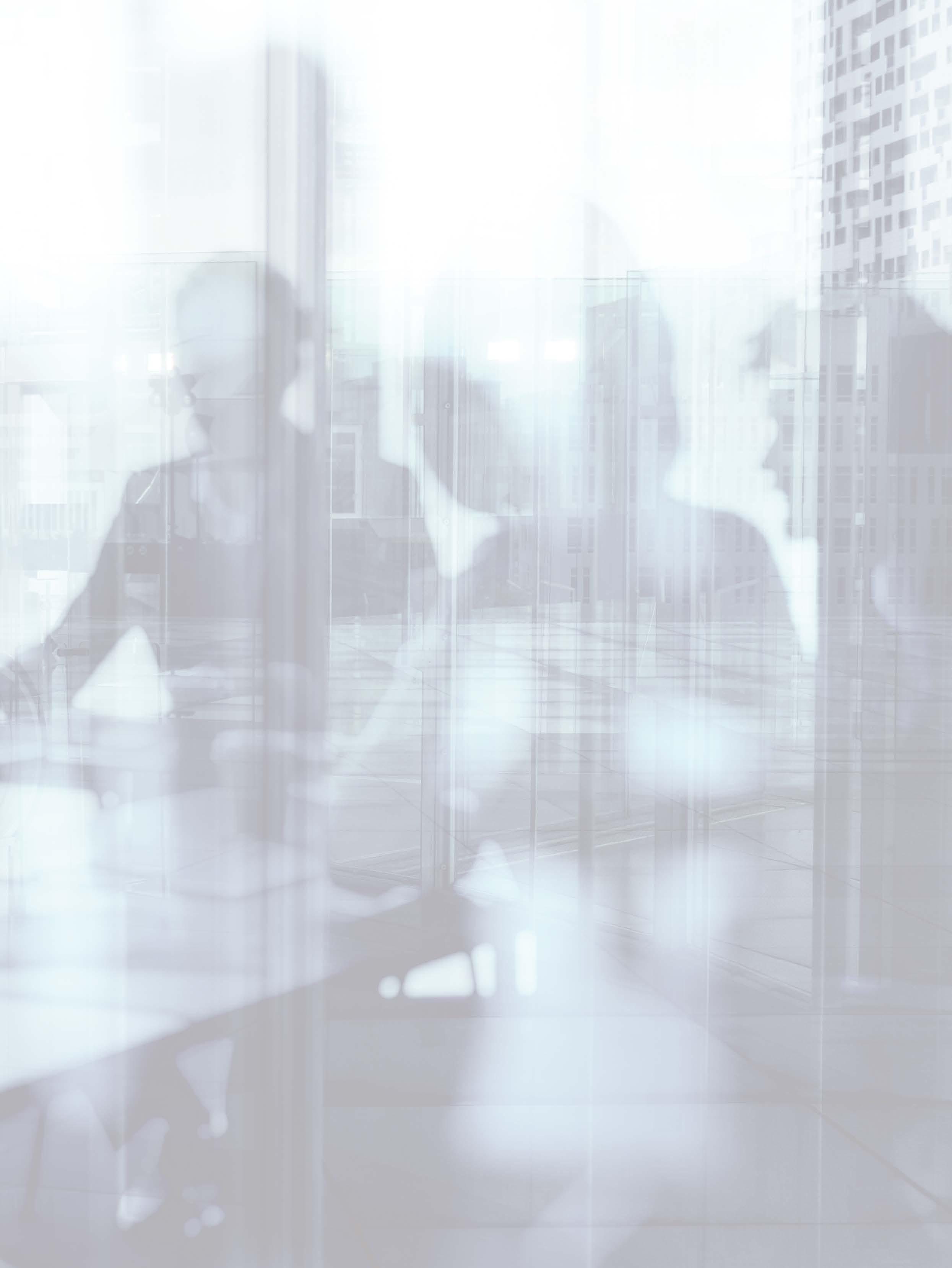
A REAL BET ON YOUTH
The stories of Elise Machado and Matheus Carrijo are very similar. Both are from Brasilia, joined the company as interns in mid-2021, worked in a number of areas, worked on the Seeds for the Future project [the article on page 22], were hired and now, are very excited about what the future at Huawei has in store for them.
Elise Machado turned 23 in April and is one of the company’s youngest employees. Before joining Huawei, the Political Science student from the University of Brasília (UNB) had already done two internships. She says that she got to know Huawei through monitoring

the news at the time of the 5G auction and identified a lot with the company. She started as an intern, went through several areas, such as renewable energies, international organizations, and environmental and social projects. Today, she works in the government and public relations department.
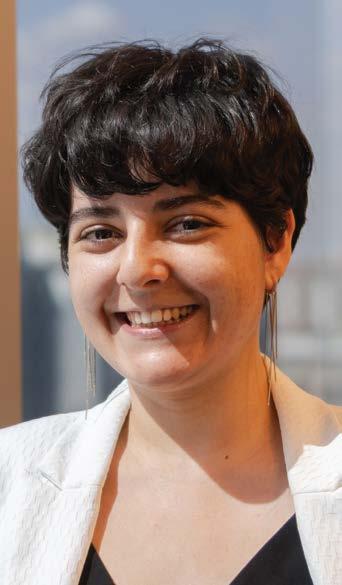
“As an intern, I participated in Seeds For the Future, a global Huawei program that has been running since 2015 and has already trained thousands of students. The idea is to inspire young people and talents to pursue a career in the ICT market, and through it, I was able to have a better understanding of the transformative role that technology plays. It was a milestone in my life,” she reported.
In fact, the program planted a passion for technology in the young woman. “I love to see the impact that technology has on people’s lives. We always talk about bringing the digital environment to people, homes, and organizations. I saw the impact being generated and how my work contributes
to that,” she commented.
Currently a Public Relations Analyst, Elise Machado has already accompanied a group of Brazilians made up of students, professors and public authorities in Mexico, in a visit to the facilities in that country, to discuss the role of digital talent in Latin America. “The international experience was incredible. This shows Huawei’s culture and value in investing in youth – I was newly hired at the time. it is very easy to fall in love with the company,” she noted.
Matheus Carrijo, Sales Executive for the Public Sector, serves government clients in the Enterprise business unit. In his two years with the company, however, he served in different roles. The first of them, still as an intern, was in the public and government relations department, in the area of social responsibility.
He also participated in the Seeds For the Future program and, in August 2022, joined the Enterprise business unit as an intern. “There, I began to understand the world of sales, and in January 2023, I was hired,” he said.
Carrijo graduated in International Relations from Centro de Ensino Unificado de Brasília (CEUB) in December 2022. “This new experience is very different. I have a number of responsibilities and a certain routine that is similar to mt previous one, but now with bolder goals from a commercial standpoint,” he said.
The experience has been interesting and challenging, as well as rewarding, according to the young man. “Huawei gives you the opportunity and support to achieve your goals and do a good job.” Carrijo argues that there is room for individual growth. “The company opens up very interesting paths for me to develop and offers a complete training platform.”
“Still as an intern, I participated in Seeds for the Future (…). Through it, I was able to have a better understanding of the transformative role that technology plays. It was a milestone in my life.”
17 www.huawei.com.br Huawei . 25 years in Brazil
Elise Machado, who joined the company as an intern in mid-2021 and is currently a Public Relations Analyst
IN THE NOT-SO-DISTANT past, mobile Internet connectivity was a luxury. From the mere possibility of surfing the Web on phones, albeit slowly and often frustratingly, progress has been made towards a digital technological revolution. The 5G era has begun – and with it, a new movement that catalyzes innovation and promises to have a profound impact on humanity. The current technological wave prepares society for the massive use of devices and the data generated by them, and the next decade will see the fruits of that leap.
From a mixture of an appetite for innovation, investments, new technologies, and new areas of knowledge, Brazil is able to extract paths for development. The government indicates that it is attentive. According to Juscelino Filho, Minister of Communications, a series of initiatives will expand access to regions that are still underserved, cover all schools, and bring digital services to the countryside, in addition to promoting significant connectivity and the effective conversion of advances technologies in well-being.
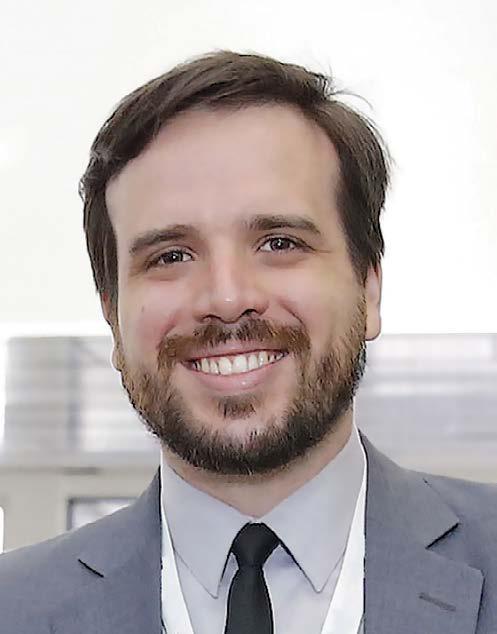
“The future of Brazilians will be transformed by various initiatives in the coming years. Through digital and social inclusion, they will begin to exercise citizenship effectively, not only enjoying the benefits arising from meaningful connectivity, but also as participants in decisions that affect the well-being of families and individuals,” said the Minister of Communications.
It is a new era of connectivity, a perfect storm capable of revolutionizing many industries. In the healthcare industry, low latency and high-bandwidth 5G enable surgeons to perform remote surgeries with precision, connecting specialists with patients

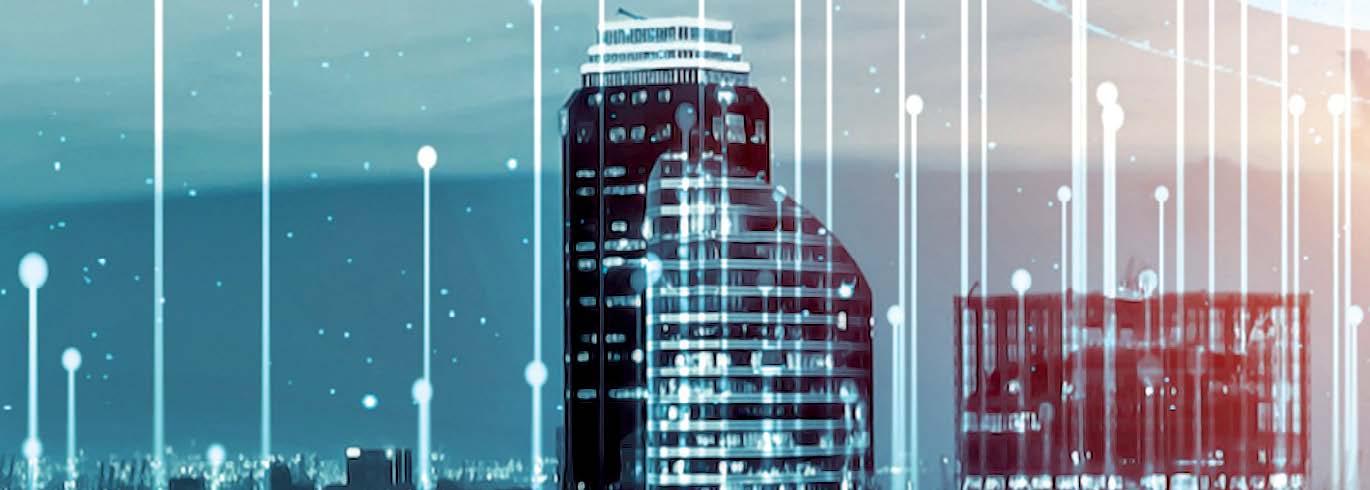

THE 5G ERA HAS ALREADY BEGUN
“We have just started and already have one of the best 5G networks on the planet. This means that Brazil can become a breeding ground for applications that will change people’s lives.”
MARKETPLACE 18 Huawei . 25 years in Brazil www.huawei.com.br
Carlos Baigorri President of ANATEL
5G ushers in a new era of connectivity, a perfect storm capable of revolutionizing multiple industries. The challenge is to know where Brazil can reach.
around the world. In education, virtual classrooms will become more immersive, offering students interactive experiences that break down barriers between continents. Businesses will streamline their operations with instantaneous data transfer, improving productivity and customer experiences.


None of this is future. It is all here.
“With one year of 5G in Brazil, success can already be measured on several fronts. The main one is the huge appetite for installing infrastructure. This demonstrates that the market believes in Brazil’s potential as a leader in technology. With the exception of China, Brazil has more standalone 5G stations than the entire world combined. We are just getting started and already have one of the best 5G networks on the planet. This means that Brazil can be a breeding ground for applications that will change people’s lives,” stressed Carlos Baigorri, President of the National Telecommunications Agency.

“From 1G to 5G, a lot has happened.
From analog, through message exchanging, to data access. In 4G, we have already started to notice a significant change. The increase in the rate associated with a distributed processing capacity began to bring about the birth of applications,” said Professor Carlos Nazareth, Director of the National Telecommunications Institute (Inatel).
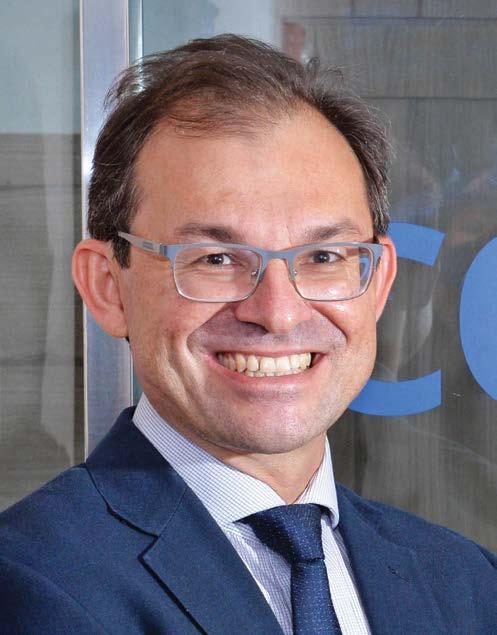
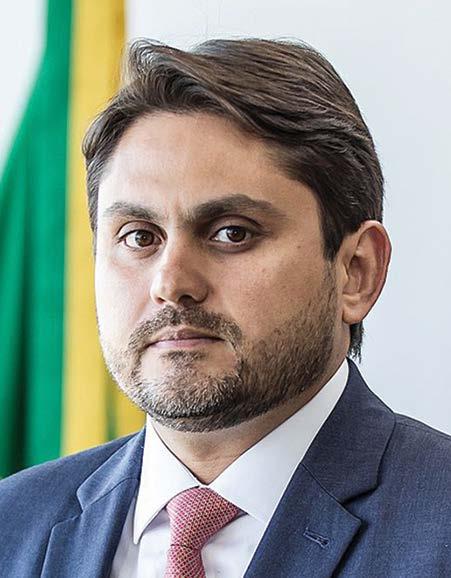
“The great disruptive factor is not being required to have everything onboard on a smartphone. The application collects information, while cloud computing processes it and returns it virtually in real time. With that, the smartphone began to have features that only large-scale computing can offer,” he summarized.
According to him, the promised future has arrived. “We are now moving into a much more sophisticated situation. Today, 5G already allows monitoring all cameras in an environment, activating or deactivating sensors by zone and enabling devices at home. The Internet of Things is gaining momentum and a second stage has begun, associated with
“Through digital and social inclusion, Brazilians will begin to exercise citizenship effectively, not only enjoying the benefits arising from meaningful connectivity, but also as participants in decisions that affect the well-being of families and individuals.”
Juscelino Filho Minister of Communications
“The sector invested over R$38 billion in 2022 alone, but network expansion and the future of the sector will also depend on the demand for 5G solutions and investments in new applications.”
19 www.huawei.com.br Huawei . 25 years in Brazil
Marcos Ferrari President of Conexis Brasil Digital
data science and artificial intelligence. The accumulation of information from sensors creates the true Big Data, allowing the interrelationship between cause and effect, with AI to monitor this absurd amount of information.”
INTELLIGENCE ACROSS CITIES, HOMES AND INDUSTRIES
There is a billionaire appetite, which appears to indicate even greater contributions than those estimated before the frequency auction, which paved the way for 5G in Brazil. In
commitments associated with the auction, the market will be investing more than R$50 billion by the end of this decade. Another R$ 100 billion are expected in the generation of services, but the first year of the new technology has already shown expressive figures.
“The sector invested more than R$38 billion in 2022 alone, but the expansion of the network and the future of the sector will also depend on the demand for 5G solutions and investments in new
applications that will be possible with the new technology,” said economist Marcos Ferrari, President of Conexis Brasil Digital, an entity that represents the main mobile operators in the country.
5G’s ability to support multiple devices simultaneously ensures the flourishing of smart cities, smart homes, and smart industries. This interconnectivity will lead to optimized energy consumption, reduced traffic congestion, and increased safety through

THE TECHNOLOGICAL LEAP IS AT THE ROOT OF DIGITAL TRANSFORMATION
WITH LOW LATENCy and high capacity to handle multiple connections, 5G is the backbone of the Internet of Thingsthis new interconnected ecosystem that will bring a new era of automation and efficiency to a wide variety of sectors, as highlighted by the operators. The technological leap, however, goes much further to give meaning and value to the aforementioned Big Data that results from this ecosystem – and this combination is at the root of the digital transformation.
This concept encapsulates a series of social and economic changes that are made possible through a modern telecommunications infrastructure and associated services. As highlighted by Luciano Saboia, IDC’s Telecommunications Research and Consulting Director in Latin America, it is a transformation that begins by changing the very sector that provides it.
“The telecommunications industry is itself undergoing a digital transformation, shifting to virtualization in the cloud. it is a dubious aspect, because at the same time that it promotes transformation, it also transforms itself,” he said, seeing in this movement a new meaning for connectivity.

“It is the redefinition of connectivity. The services that we estimate for the next 10 years will not be limited to connecting point A to point B. It will be necessary to offer a technological
assembly, in which connectivity will no longer be dissociated from security, managed services, higher volumes of data, and insights in real time,” said Saboia.
According to Eduardo Tude, President of consulting firm Teleco, the use cases will become more evident from 2025 onwards, following the new releases of 5G technical standards. A movement that is already evident, however, is the approximation of telecommunications networks to the technologies involved in cloud computing. “What 5G sought to do with its new core is to have an operating system with APIs that can facilitate interconnection with OTTs. Increasingly, operators are moving in this direction, with services that are more integrated with connectivity. In this scenario, computing carried out near users will start to take place, with the spread of edge computing,” said Eduardo Tude.
This transformation changes the nature of the telecommunications networks themselves, in a symbiosis with cloud computing. This cloudification allows telecom operators to move network functions traditionally performed on dedicated hardware to cloud-based environments, ensuring greater flexibility and scalability, as well as facilitating rapid adaptation of the network to real-time traffic needs.
It also makes it easier to bring processing closer to
20 Huawei . 25 years in Brazil www.huawei.com.br
the deployment of autonomous vehicles. Unsurprisingly, as notes the President of Conexis, 5G makes the intersectoral relationship even more relevant. “The great technological and economic transformation that is taking place with the arrival of 5G will revolutionize the economy, which will only be possible with investments from all economic sectors. The productivityboosting benefits that 5G will bring to the industry, for example, will require investments in smart equipment to connect to the network.”
customers and enables rapid deployment of new services and applications through virtualized network functions. This entire structure paves the way for a myriad of innovative use cases, across the Internet of Things, machine-to-machine (M2M) communication, and mission-critical services.



“Cloud adoption is increasingly strong, with operators migrating not only with IT workloads, but also putting the core of the network in the cloud. This has a series of important impacts, including automation, cost reduction, and efficiency. The 5G core already has to be prepared to operate in a virtualized environment, which should only deepen from now on,” stressed Ari Lopes, Senior Manager at Omdia for the Americas.
According to him, “the concept of telecom cloud will go deeper and deeper both in the core of the network and in the radio access network – the RAN,” in line with the dissemination of intelligent networks by various economic sectors. “We will increasingly have a productive process, whether in manufacturing, finance, logistics, or any other, with an increasingly bigger connection and greater use of technology,” he added. Nothing right now is more illustrative of this movement than the opening of networks to APIs. “Companies launched the Open Gateway initiative, opening the network to having APIs, subsequently with developers using networks for applications. They do it together with the cloud companies. The discussion changes, now with collaboration on new services and richer applications,” said Ari Lopes.
if, as Carlos Baigorri, President of ANATEL, argues, the country has the most advanced 5G network in the world, in addition to China, there is also a moment of important convergence for Brazil, which should be able to take advantage of this wave to secure a place as a creator and provider of new solutions – while at the same time providing social inclusion based on digital inclusion as a development tool.
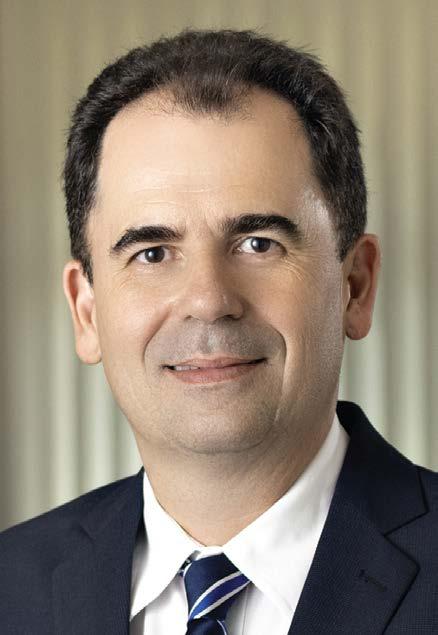
“The challenge is where we can go. What changes people’s lives and what generates value is not just the network, but the applications made possible by technology. The unicorns of the next few decades could emerge here on the largest 5G network outside of China, as long as startups emerge here to test it. This requires that public authorities, companies, academia, and society as a whole become engaged so that these opportunities can be enjoyed by Brazilians,” insisted Baigorri.
The impact is broad, as stressed by Ruben Delgado, President of Softex, and it has everything to favor new job market opportunities. “These technologies – the result of large investments in R&D – enable a profound technological, economic and social leap for the country,” he argued.
“Digital transformation provides business growth and professional opportunities in programming, data analysis, cybersecurity, digital marketing, software development, and cloud services. We can project a scenario for the next ten years in which digitization will be even more present in different sectors of the Brazilian economy,” added Delgado.
“The great disruptive factor is not being required to have everything onboard on a smartphone. The application collects information, while cloud computing processes it and returns it virtually in real time.”
Carlos Nazareth Director of Inatel
21 www.huawei.com.br Huawei . 25 years in Brazil
BRAZIL AS A PRIORITY IN QUALIFIED LABOR TRAINING
The
THE LACK of skilled labor for the Information and Communication Technology (ICT) market is not new. A study conducted at the end of 2022 by the Brazilian Association of Information and Communication Technology and Digital Technologies Companies (BRASSCOM) indicated that, by 2025, the market should generate approximately 797,000 jobs in the technology area. Meanwhile, universities will graduate only 50,000 new professionals a year. To minimize this deficit, Huawei has been investing heavily in training programs.
In its Brazilian operation, Huawei
maintains a series of talent training programs and plans to qualify around 100,000 people in the country in 2023. Elise Machado, the company’s Public Relations Analyst in Brazil, explains that the proposal consists of promoting a journey of encouraging talent, its main program being the ICT Academy, a global initiative that connects the company to private and public higher education institutions.
“It is a program aimed at accelerating the qualification of young people, teachers and public servants in schools for the digital transformation, with the aim of helping balance out the
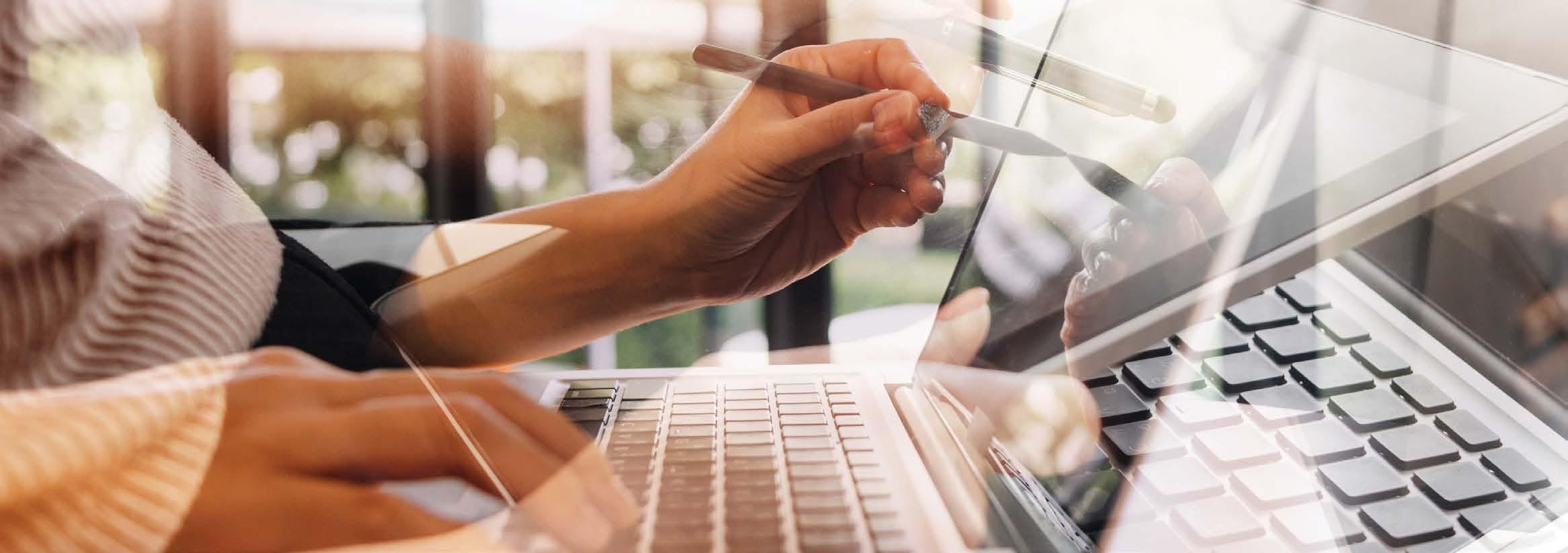

deficit of professionals trained in ICTs in Brazil,” summarized Victor Montenegro, Talent and Ecosystem Manager at Huawei Brasil, noting that the alignment with universities includes training in FTTH, cloud, cybersecurity, Artificial Intelligence, 5G, and IoT technologies, among others. Altogether, over 200 training sessions are given at different levels. The ICT Academy also includes the creation of physical and virtual laboratories for students to train their skills. so far, more than 52 laboratories have been implemented alongside the best universities in the country.
BRAZIL AS A PRIORITY
The ICT Academy was created in 2013 and arrived in Brazil in 2017. “Huawei has placed Brazil as a priority at the global level,” celebrated Montenegro. Currently, 95% of the ICT market in Brazil goes through Huawei in one way or another, which means that
goal is to train 100,000 specialists in technologies such as FTTH, cloud, cybersecurity, Artificial Intelligence, 5G and IoT, among others – all in 2023.
TRAINING 22 Huawei . 25 years in Brazil www.huawei.com.br
“the company increasingly needs to collaborate with Brazilian institutions in the process of training and digital transformation for the future.”
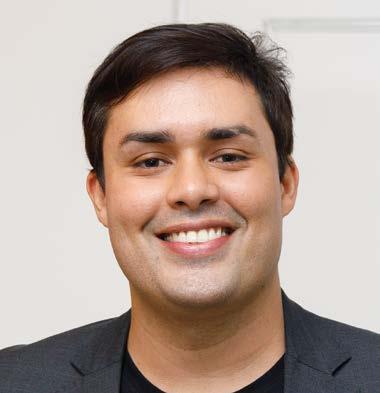
As of 2022, the ICT Academy trained 36,000 professionals in Brazil, in what was considered its maturation phase. Starting in that year, the initiative accelerated its expansion: it started the year with 99 partner educational institutions, ended with more than 220, and the expectation for 2023 is to exceed 100,000 training sessions. Global collaboration is also encouraged through competitions between universities. They take place at the national level, move on to Latin America, and finally, are held globally. “The idea is to connect Brazilian teaching institutions to a new level of global collaboration,” said Montenegro. To close the cycle, there is the Talent Bridge Platform, a platform for open internships and jobs at the company for young people qualified through training programs.

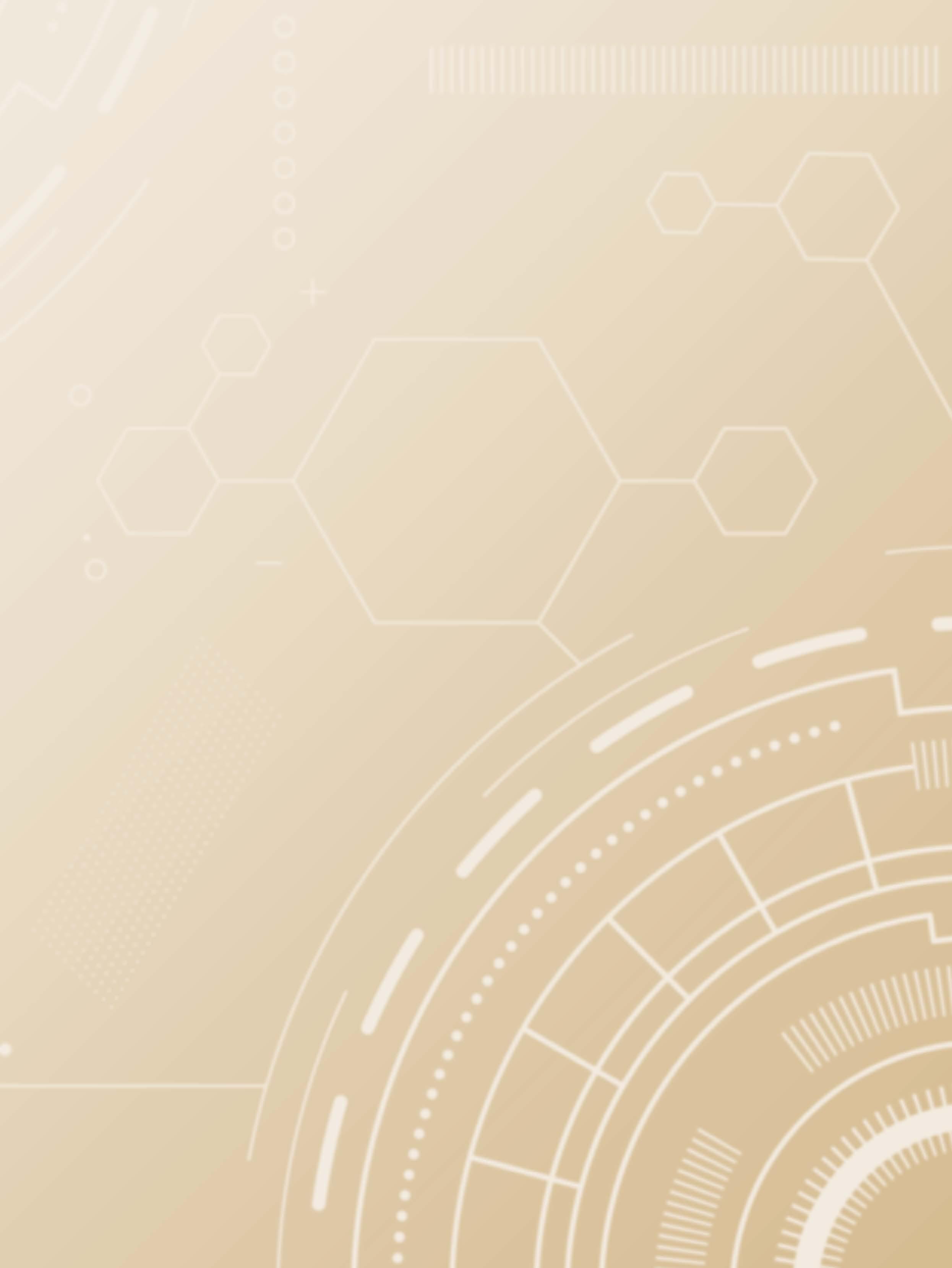
TraininG in nuMBers
+ 11,500 global certifications in 2022

52 laboratories at universities or technology centers
ICT Academy

• Goal of 100,000 training sessions in 2023
• 36,000 training sessions (2017 to 2022)
Nem-Nem (Neither-Nor)
• + 600 young people trained
Seeds For the Future Brasil
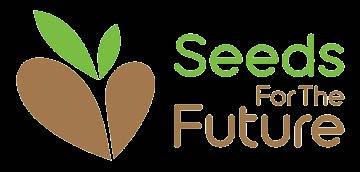
• 250 students trained since 2015
Technology for all
• + 70 cities in Brazil
5G Truck

• 1,500 training sessions in 19 cities in 2022
R&D
• + R$250 million invested since 2018
• 20 projects with universities
“The company increasingly needs to collaborate with Brazilian institutions in the process of training and digital transformation for the future.”
Victor Montenegro
Talent and Ecosystem Manager at Huawei Brasil
23 www.huawei.com.br Huawei . 25 years in Brazil
PROJECTS TRAIN PEOPLE AT DIFFERENT STAGES OF LIFE
IN ADDITION to strong work with university students, Huawei maintains a series of initiatives aimed at young people and people at different stages of life, such as:
Nem-Nem (Neither-Nor) . Targeted at those who neither work nor attend school. Mostly, these are people who have completed high school and still have not defined which career to follow. “We introduced them to Huawei’s technologies and how they can help them enter the job market,” said Elise Machado, noting that, so far, the project has trained more than 600 young people.
Seeds For the Future . Composed of live-streamed classes, taught by market experts and Huawei professionals, on leadership, sustainability, and Chinese culture. Young people also receive classes on 5G technologies, artificial intelligence, cloud, Big Data and IoT in a self-learning model, in addition to mentoring to develop, based on Huawei technologies, solutions that address real-life social problems linked to the United Nations (UN) Sustainable Development Goals. The 2023 edition of Seeds for the Future, scheduled to take place in October, will have 50% of the seats reserved for women. Since 2015, when it was implemented in Brazil, the program has trained 250 students.
Technology for all . Named the Business Transformation Truck, the ICT Academy vehicle will be traveling through more than 70 cities in Brazil, bringing training to all types of people. It will bring smart concepts to classrooms and universities, short courses for students who cannot take online courses, and events in strategic locations.
5G Truck . Like the Business Transformation Truck, the 5G Truck travels around Brazil bringing knowledge to the general public. In 2022, it visited 19 cities and was a classroom for over 1,500 5G training sessions. In 2023, it will visit 35 cities.
Research and Development . Huawei maintains 20 R&D projects with Brazilian universities in areas such as mining, agriculture, livestock, retail, logistics, manufacturing, and finance. Since 2018, the company has invested over R$250 million in R&D projects, including the installation of laboratories in higher-education institutions and teaching centers across Brazil.
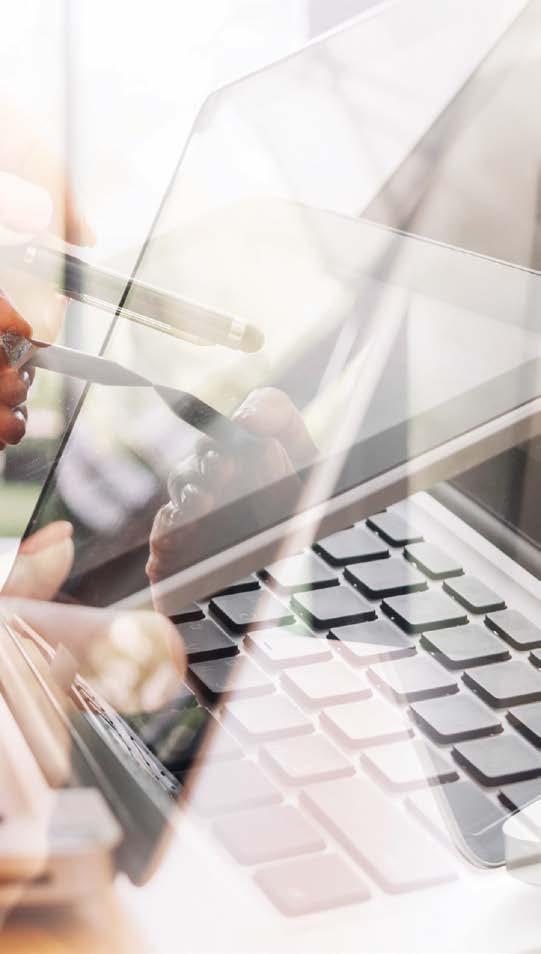

Tech4All . A long-term initiative for digital inclusion. Together with its partners, including governments, customers, international companies, research institutes, and non-governmental organizations, Huawei is committed to technologies such as connectivity, cloud, artificial intelligence, and device platforms that enable the development of new and innovative applications to make the world a more inclusive and sustainable place.
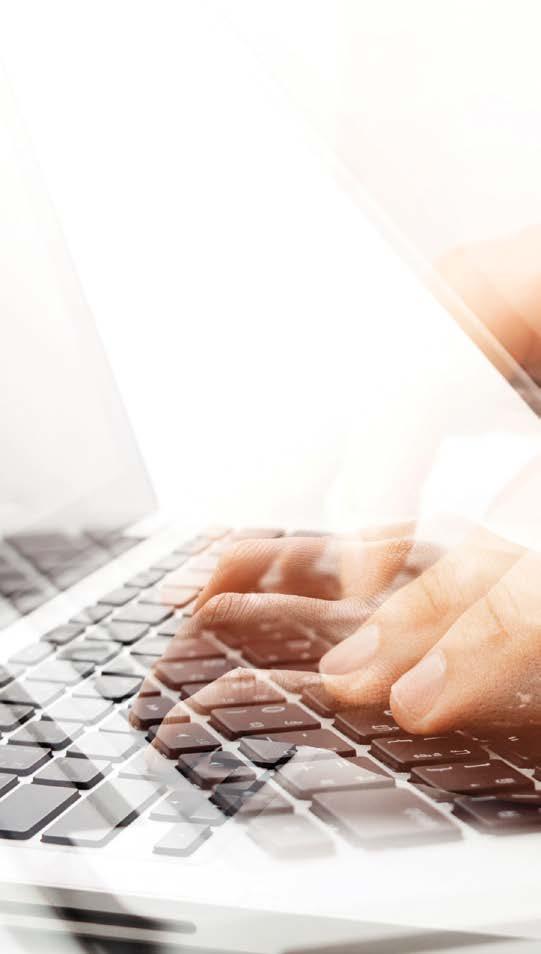
Huawei is also planning a series of new projects for Brazil, such as Story Sign, a literacy platform for hearing-impaired and deaf children that uses Artificial Intelligence and augmented reality to help them learn to read, and which is already available on the Federal Government’s MECPlace platform.
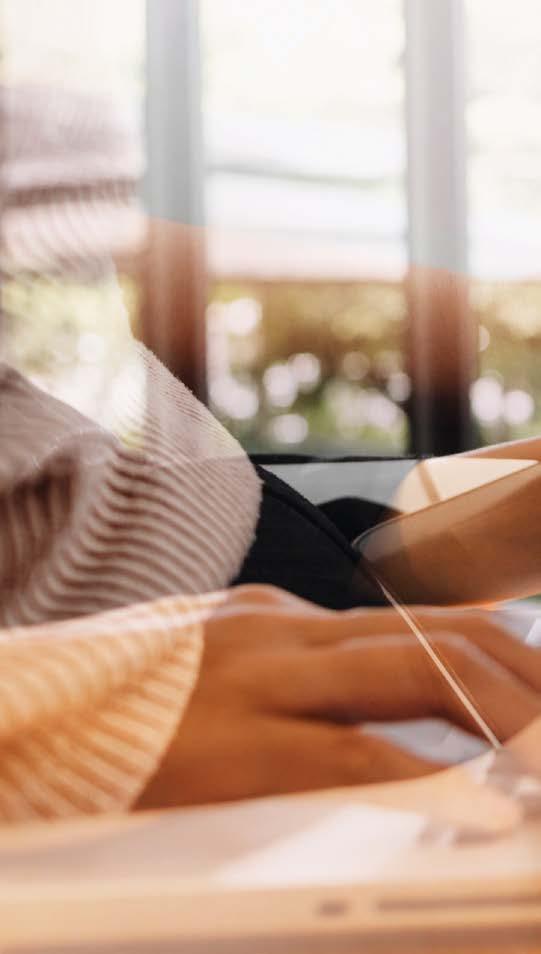
24 Huawei . 25 years in Brazil www.huawei.com.br
AN INITIATIVE THAT DISSEMINATES KNOWLEDGE EVEN IN HIGH SCHOOL
IN ADDITION TO TRAINING professionals in the short term, it is essential to include technology in young people’s learning before they reach the job market. “By addressing the subject in the classroom while students are still in high school, we have managed to broaden the perspectives of the next generations of workers and the way they see the future,” explained Montenegro. Huawei has been working very closely with schools across Brazil, especially public ones.
The company works together with education departments in different regions, offering training to public-school teachers. “These training sessions aim to ensure that educators are qualified to show young people everything that technology can do in their lives, enabling
them to absorb up-to-date materials in their classes and, of course, stimulate students’ interest in careers linked to technological innovation,” stressed Montenegro.



In 2022, agreements of this type trained over 200,000 teachers across the country. “These are high-standard training programs with the potential to support and help us guide the technological and educational transformation in Brazil,” assessed Montenegro, revealing that in May this year, Huawei signed a cooperation agreement with the Secretary of State for Education of the Government of Minas Gerais to train the entire network of high-school teachers in Minas Gerais, which should generate over 60,000 training sessions in 2023 alone.
A STIMULUS TO EXPAND WOMEN’S INTEREST
AS THE NATIONAL ARM of the global Tech for Women program, Women in Tech was launched in Brazil in 2022. “As a leader in its industry, Huawei is aware that a lack of equity means a slower pace of innovation. We wish to prevent the lower representativeness from discouraging other women to pursue careers in ICTs,” added Machado, also the leader of the project in Brazil.


Among the main actions, Women in Tech supported the Mulheres Exponenciais event, which was the stage for meetings between female personalities and leaders to discuss the role of women in society and
politics. The company also joined the global Girls in ICT campaign and, as part of the action, held an event alongside the National Telecommunications Institute (Inatel) to encourage women to enter the ICT market. Huawei is expected to launch a project focused on low-income women later this year. Also organized in partnership with Inatel, the initiative will support low-income professionals interested in making a career in ICTs, offering scholarships at the institution. Huawei will fund the study and provide mentoring throughout their academic journeys, for both the development of soft skills and leadership skills.
25 www.huawei.com.br Huawei . 25 years in Brazil
WAREHOUSE MAKES DELIVERY FASTER
To speed up the integration process of parts and guarantee delivery of solutions within deadlines required by clients, Huawei maintains what it calls the Smart Warehouse in Sorocaba.
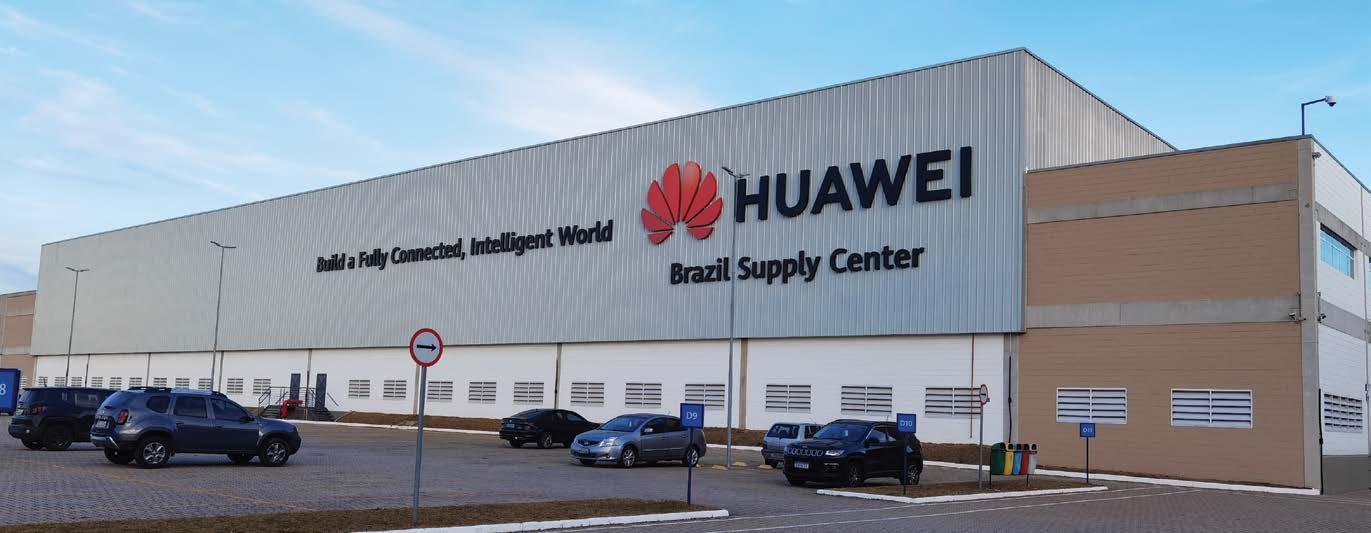

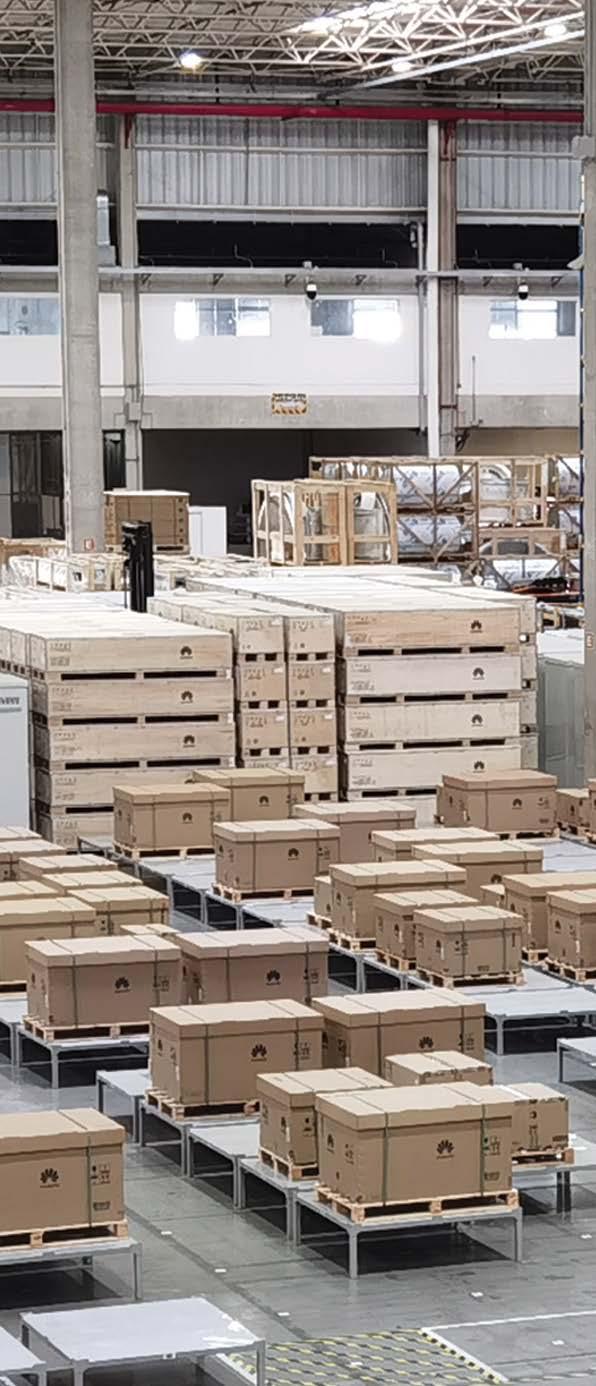

THE 5G WAREHOuSE is an innovation that has been used by Huawei to its advantage for some time now. In Brazil, the company uses the so-called picking & packing process, which means that it gathers parts and pieces and assembles its solutions here. This process is carried out in the company’s warehouse, located in Sorocaba, São Paulo (SP), where the materials are received, assembled, and forwarded to customers.
Emerson de Oliveira, director of logistics at Huawei, explained that the company imports roughly 33% of what it uses and purchases another 33% in the local market, while the remainder is manufactured by its partner FoxConn. To speed up the process of integrating parts and guarantee the delivery of solutions within the deadlines required by customers, Huawei built what it calls
a Smart Warehouse in Sorocaba.
“This warehouse consolidates what was previously scattered across seven warehouses, which hindered the process of managing materials,” explained Oliveira, recalling that “centralization optimized logistics, increased predictability, improved inventory management, and reduced costs”. These benefits, however, are not only due to centralization. Additionally, there are a number of technologies that, working together, have revolutionized the process.
“We have, for example, RFID, which assists in stock management, receipt, inventory, and material traceability, as well as the 5G network, with five robots connected,” he revealed. The warehouse also has autonomous vehicles, installed smart cameras, and use of the cloud to
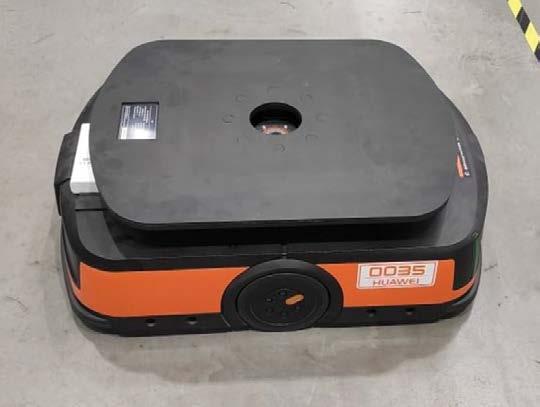
store process information. “This allows us to call it an intelligent warehouse, as everything is done through systems, which indicate the next task to be performed,” he said.
INSIDE THE 5G WAREHOUSE
To guarantee the connection between all automated components, the warehouse – which has an area of 22,000 square meters – is covered by a private 5G network provided by Vivo. It is a private non-standalone network (NSA), which operates in the 3.5 GHz band and comprises 12 antennas capable of connecting up to 300 smart devices. Thanks to the network, it is possible to connect various devices in real time, such as self-driving vehicles, monitoring cameras with artificial intelligence, and radiofrequency
LOGISTICS 26 Huawei . 25 years in Brazil www.huawei.com.br
devices. The use of a more stable and faster network allowed for gains in the logistics process, such as a 25% increase in operational efficiency, a reduction in the production cycle from 17 to 7 hours, a 20% improvement in stock handling, and elimination of operational errors and use of paper.
Some of the machines connected to the 5G network include 12 AGVs (Automated Guided Vehicles), which comprise transport carts created to take raw materials and equipment to different points, circulating through the corridors like employees. For this displacement, they use obstacle sensors.

They also use AI to get under suspended bases and lift them to move equipment to a specific destination. Each one supports up to 800 kilograms
of loads and works autonomously according to its schedule: they know what to take and where to take it, they stop in front of barriers, and go to the charging base when they are running low on battery. Each AGV requires an uplink – signal transmission – of 20 Mbps, in addition to immediate responses to operate efficiently, which only happens thanks to the low latency of 5G.
RFID (Radio Frequency Identification) is used throughout the chain, from the receipt of manufactured equipment to shipment, passing through inventory. Everything that arrives at the warehouse receives an intelligent label, and the data is digitally entered into the system, without the need for paperwork.
The RFID is read by sensors on
forklift trucks and by handheld readers used by employees indicating where each box should be stored. Pallets and shelves are also labeled, which facilitates inventory and stock counts – a process that used to take four days to do manually.
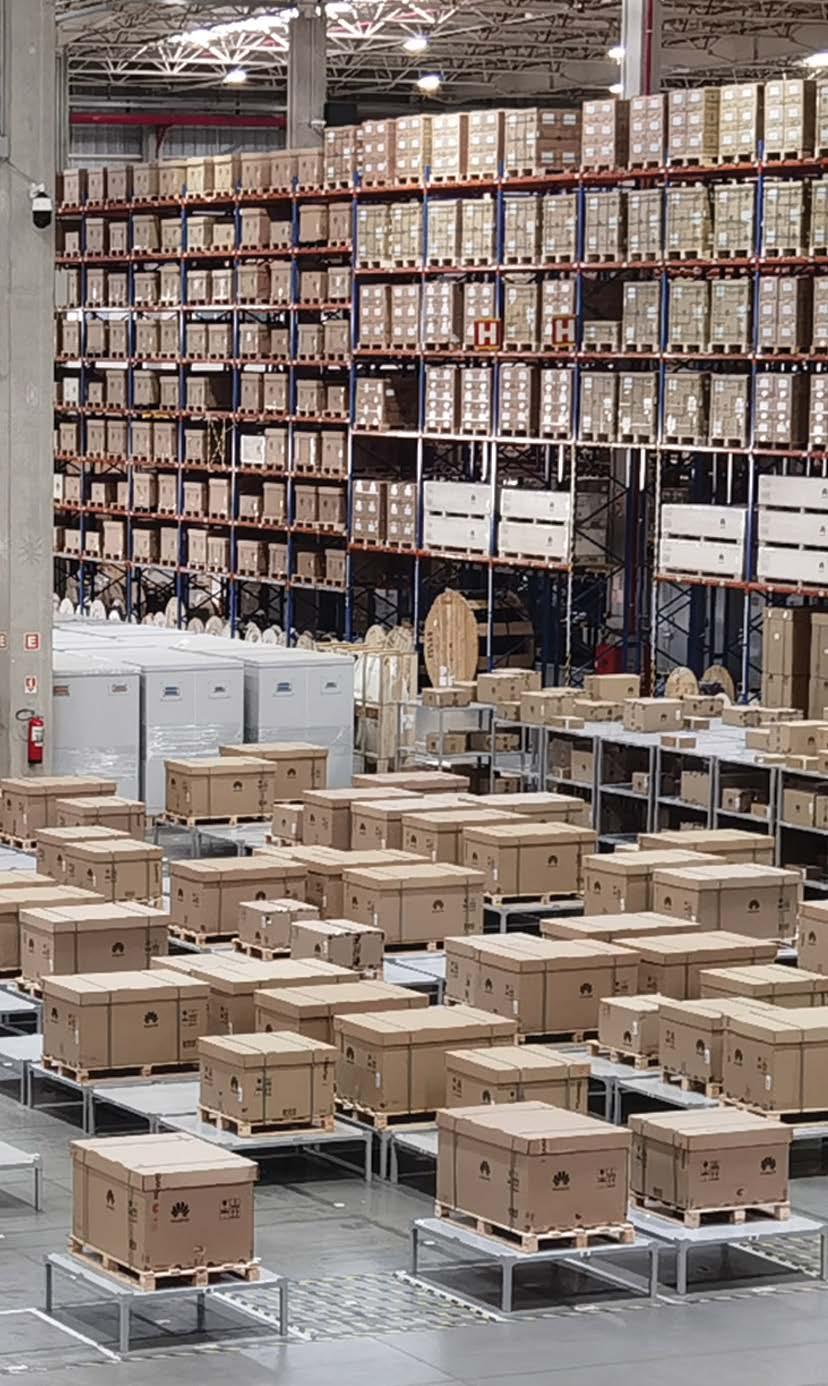

RESULTS AND EVOLUTION
According to Oliveira, the 5G network has been operating in the warehouse for three years, with benefits including greater inventory control, whose time has been reduced from 48 hours to 2 hours in the raw materials area, and elimination of errors in shipment, as all material now receives a radiofrequency label and is registered on a website that controls the stock.


“Since the implementation of 5G, we have achieved a 25% gain in operational efficiency, that is, time reduction for several processes and elimination of errors and paper, among other benefits,” he stressed.
“We are also in the process of deploying autonomous forklifts, which were shipped from China and are currently in the process of being configured, which should increase our level of automation. The idea is to gain in terms of efficiency, predictability, and costs. I believe that we will have it in operation by the end of this year, with them effectively being used in the production process,” he argued.
27 www.huawei.com.br Huawei . 25 years in Brazil
“[The Smart Warehouse] streamlined logistics, increased predictability, improved inventory management, and reduced costs.”
Emerson de Oliveira Director of Logistics at Huawei Brazil
A COMPANY WITH THE DNA OF INNOVATION
IN ADDITION TO the telecommunications infrastructure, Huawei – which has the DNA of innovation – looks at customer demand to expand its operations in the country through two units that are gaining more and more space in the business: Huawei Cloud and Digital Power. “The company has been investing heavily in cloud growth worldwide. All business areas also aim to market Huawei Cloud, so that it can become an organic sale,” noted Fernando Penna, Cloud Business Development manager.
The expansion of cloud business requires a robust infrastructure. Huawei Cloud has two availability zones (AZ) in Brazil, with a third one to be launched by the second half of this year. in Latin America, Huawei Cloud is present in five countries: Brazil,
Argentina, Chile, Mexico, and Peru.
For Huawei, digital transformation involves the native use of cloud. The use of open technologies is also a mission, and the company’s own datacenters are crucial for reducing latency, a growing demand from customers, mainly with the evolution of 5G and the massification of environments with several clouds.


The new generation of digitalization means, in Huawei’s view, the combination of cloud+AI+5G coupled with green technology. This can be achieved with the use of clean energy, that is, renewable sources, as well as through the more efficient generation of energy itself.
Sustainable energy already is and is expected to be an increasingly global priority. in Brazil, the Digital Power unit has been present for six years and consolidated
just over two years ago. The unit offers intelligent solutions for the generation, distribution, and storage of photovoltaic energy. “Without energy, Brazil cannot grow. In the coming years, the power plant will have to be quadrupled, with great respect for the environment, as well as of an understanding of what kind of society we want for the world and for our country – and here, there is still a lot of untapped potential,” said Humberto Cravo Neto, Vice President of Huawei Digital Power (read moreinWhereistheNextLevelofEnergy).
A COMPLETE ECOSYSTEM
In 2015, at the height of the arrival of 4G in Brazil, Huawei established A
STRATEGY 28 Huawei . 25 years in Brazil www.huawei.com.br
A sustainable, green world requires cloud, renewable energy and cybersecurity, and Huawei is ready for it all.
“Huawei has been investing heavily in cloud growth worldwide. All business areas aim to market Huawei Cloud as well.”
Fernando Penna Cloud Business Development Manager at Huawei Brasil
WHERE IS THE NEXT LEVEL OF ENERGY
THE DIVISION focused on solar energy has been operating in Brazil for six years (12 in China), and two years ago, it changed its name to Digital Power, when it ceased to be linked to the Enterprise unit to become an autonomous unit. That is precisely because the climate urgency demands the use of renewable and more ecological sources.
Huawei saw this potential, and in a short time, the company helped modernize plants. “Today, 50% of what is deployed in Brazil has our architecture and the market

trend is to operate with string inverters, which we have developed and are leaders in,” noted Bruno Guerra, Sales Director of the Solar Energy unit at Huawei.
According to Humberto Cravo Neto, Vice President of the Digital Power unit, the energy market is like the telecommunications area 10 years ago, being driven by the goal of zero carbon. “It is a market that is expected to undergo changes, mergers, and acquisitions, but it has unparalleled potential,” he noted. Huawei also believes that the future
involves energy storage through lithium batteries. This will be a new wave of growth for the area – the first was the boom in solar power plants. It should be followed by green hydrogen, that is, storage of renewable energy to inject it into the grid without carbon emissions. Huawei’s digital energy business, alongside its partners, has provided clean energy to over 50 million homes in Brazil and created around 20,000 jobs. As of 2022, Huawei had helped Brazil reduce carbon emissions by 10 million metric tons and generate 21.6 billion kilowatt-hours of electricity, equivalent to planting 14 million trees.
Customer Solutions and Innovation Center (CSIC) to show customers how to use 4G connectivity, fiber optics and datacenters to leverage new businesses.
With the beginning of the debates regarding 5G in Brazil, Huawei decided to change the CSIC to EITC (Ecosystem Innovation Technology Center), expanding its scope, as the technology involves other stakeholders and promotes a great digital transformation thanks to its high bandwidth, low latency, and the possibility of connecting a large number of devices. “This conglomerate of stakeholders forms an ecosystem, so that our CSIC has migrated to

become an ecosystem itself,” detailed Tiago Fontes, Director of Marketing and Ecosystem at Huawei Brasil.

It is a place to showcase the cutting edge of technology, with use cases showing how what is new in terms of products and solutions from Huawei, which can change the lives of companies and people. The EITC receives over 300 visits from companies every year, totaling 3,000 people, including customers, partners, and mainly, government and industry representatives.
Another example along these lines is Open Lab. Established in Brazil in 2017, it has become a tool for both Huawei and
its partners operating in the corporate market. It serves as a showroom and as an experimentation space, in which partners can take clients to present the potential of their tools.
“We have invested in all these areas: we have the connectivity part, the devices, and the cloud platform. We have a complete portfolio in the construction of this ecosystem, with the necessary infrastructure to support this connected world. Furthermore, it is a green future, as it has to be concerned with energy, in addition to the issue of cybersecurity for the environment,” added Marcelo Motta, Director of Cybersecurity and Solutions at Huawei.
29 www.huawei.com.br Huawei . 25 years in Brazil
“Without energy, Brazil cannot grow. In the coming years, the power plant will have to be quadrupled, with great respect for the environment, and solar energy is the way forward.”
Humberto Cravo Neto Vice President of Huawei Digital Power in Brazil
THE FUTURE COMES WITH INTEGRATION BETWEEN DATA, PEOPLE, AND TECHNOLOGY
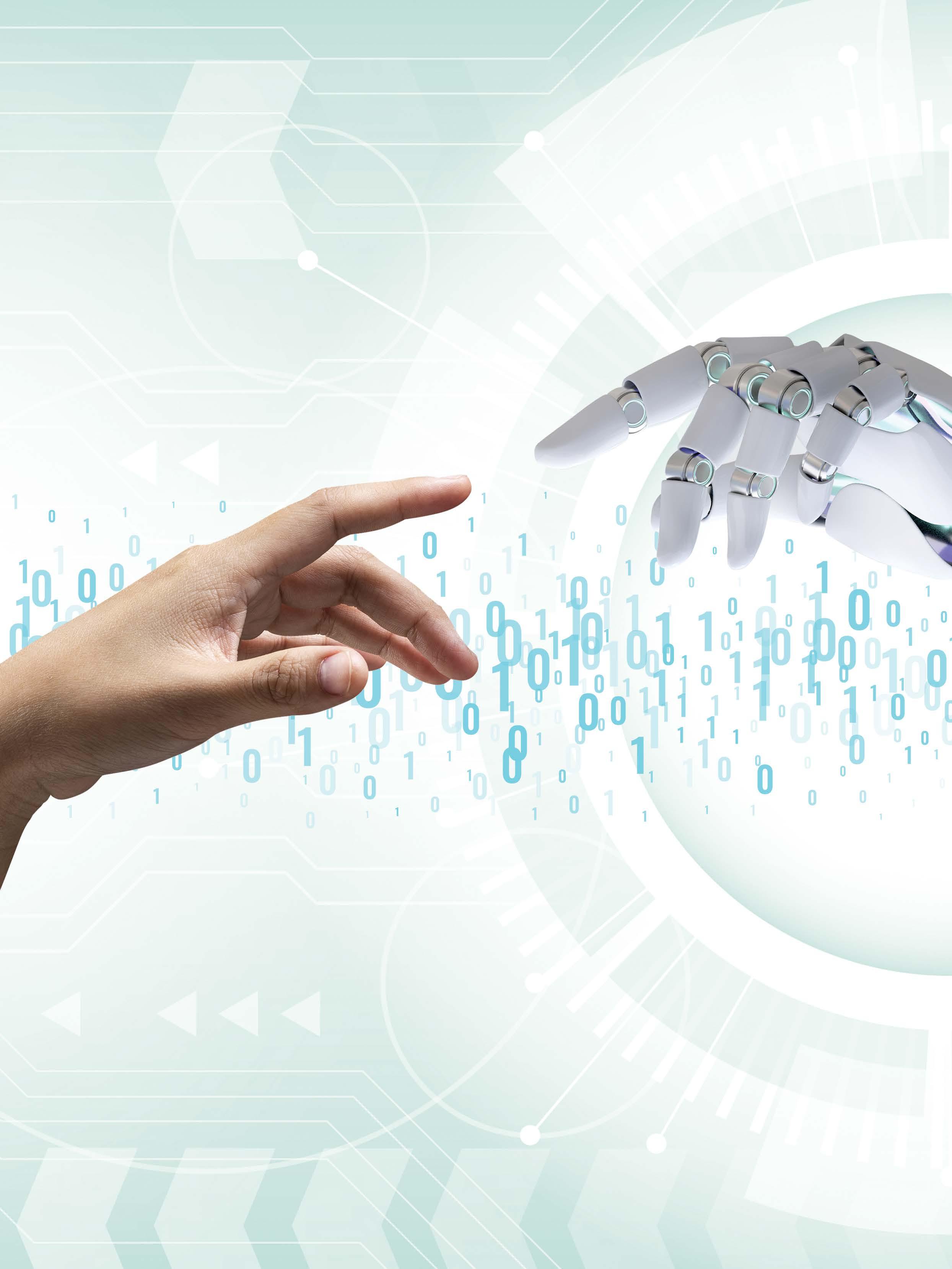
One of the next steps of technology is its humanization. The Internet of Intelligent Things will become that of the senses. And the convergence of silicon with carbon will come. The next 25 years promise many changes.
IN ONE GENERATION, technology at one’s fingertips went from the “Snake game” to biometric verification to release the payment of a benefit. More than technological leaps, these were two decades of digital convergence, from telecommunications networks to cloud computing, from processing capacity to artificial intelligence capable of perceiving behavioral nuances.
From a mixture of an appetite for innovation, investments, new technologies, and new areas of knowledge, Brazil is able to extract paths for development. The government indicates that it is attentive.
FUTURE 30 Huawei . 25 years in Brazil www.huawei.com.br
According to Juscelino Filho, Minister of Communications, a series of initiatives will expand access to regions that are still underserved, cover all schools, and bring digital services to the countryside, in addition to promoting significant connectivity and the effective conversion of technological advances into well-being be.
If there is one constant, that would be the approach between technology and people – something present in the 4 billion personal devices for communication, computing, entertainment, and creation. It is,
however, an especially remarkable aspect in the human emulation of virtual assistants or in the development of programming languages that lean increasingly towards the natural.
“There is a good deal of imponderables for the next 25 years, but successful solutions and good applications will come to humanize technology. Artificial intelligence and machine learning will be expanded to better meet demands that exist and which do not yet exist,” said Carlos Lauria, Director of Government Relations and Regulatory Affairs at Huawei.

One of the next technological steps is precisely towards what humans feel. “6G, which is something expected to come in the next few years, already involves a lot of involvement of the senses – the Internet that can be touched and smelled. It should come with an Internet of Smart Things, with devices and sensors that are different from those we have today,” added Lauria, without forgetting that it is the technical conditions that give rise to new applications.
“The integration of data, people and technology is what is coming next in all areas,” said researcher Rossana Maria de
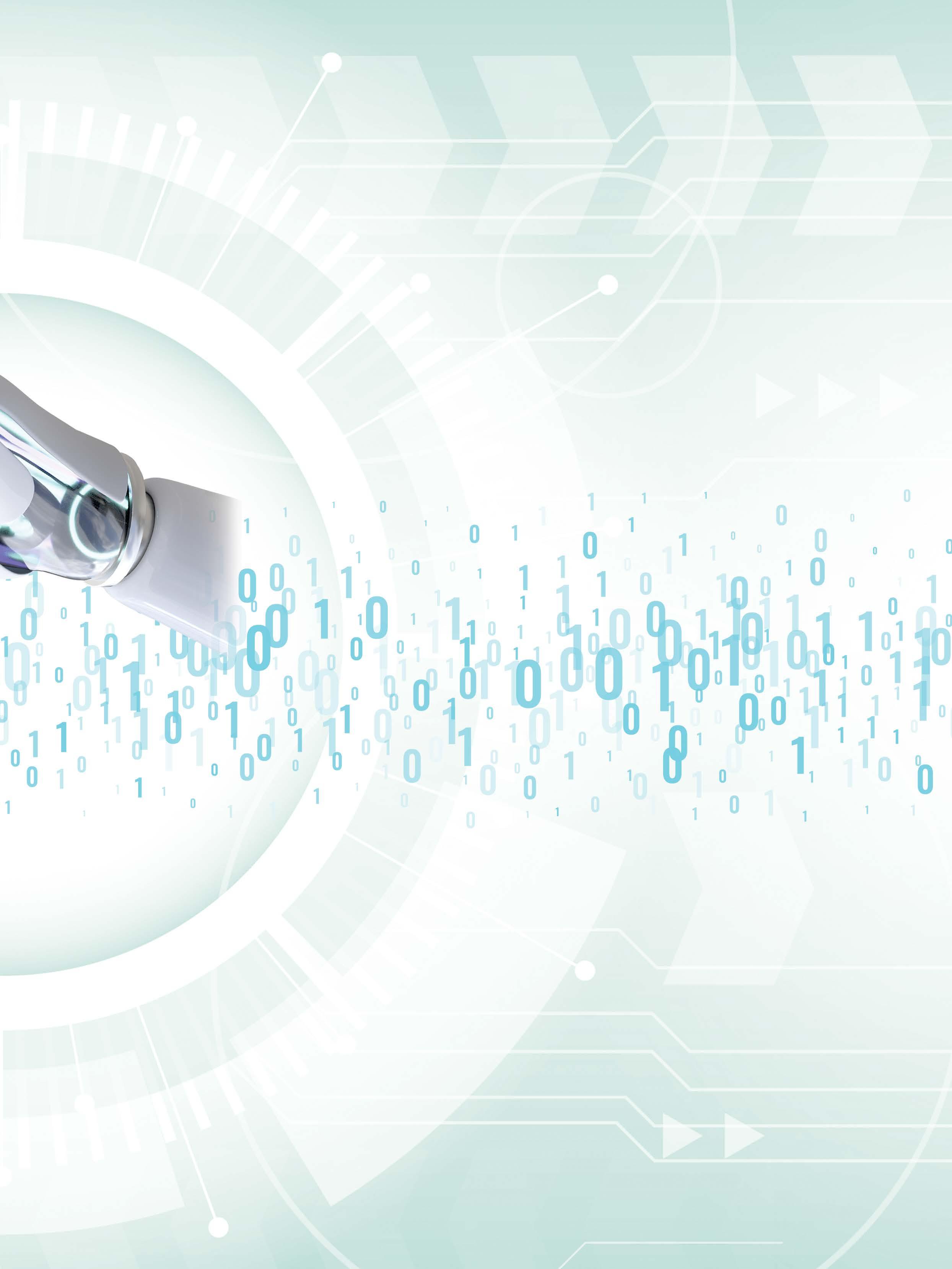
“Artificial intelligence and machine learning will be expanded to better serve both the demands that exist and the ones which do not yet exist.”
Carlos Lauria Director of Government Relations and Regulatory Affairs at Huawei
“The first thing we should think about is the integration of humans with technology (…), which keeps getting stronger.”
Rossana Maria de Castro Andrade
31 www. huawei.com.br Huawei . 25 years in Brazil
Coordinator of GREat at the Federal University of Ceará
Castro Andrade, professor of computing and coordinator of the Computer Networks, Software and Systems Engineering (GREat) group at the Federal University of Ceará. She also highlights the convergence of innovations with people as a determining factor for development.
“The first thing we should think
about is the integration of humans with technology. Today, we have technologies scattered everywhere, with cameras, sensors on smartphones, autonomous cars, systems, software, which is everywhere, and even smart human cities. The integration between man and technology is getting bigger and
A BRAVE NEW WORLD IS JUST AROUND THE CORNER
IT IS ALREADy legitimate to speculate that virtual and augmented reality technologies will be fully integrated into our daily lives, offering immersive and engaging experiences, that more and more user interfaces will be designed to work seamlessly with the senses, and that devices will be largely able to dialogue and be programmed with natural language.
“We will have mixed, augmented, and virtual realities, which will give us the ability to play soccer in the metaverse. A derby with each team on their field and each crowd in their stadium, projected onto each other, with the perception that they are all there. The ball in the IoT will be connected with the ball in the other stadium,” described professor, scientist and entrepreneur Silvio Meira, founder of the Recife Center for Advanced Studies and Systems (Cesar), professor at the Cesar School, and chief scientist at TDS
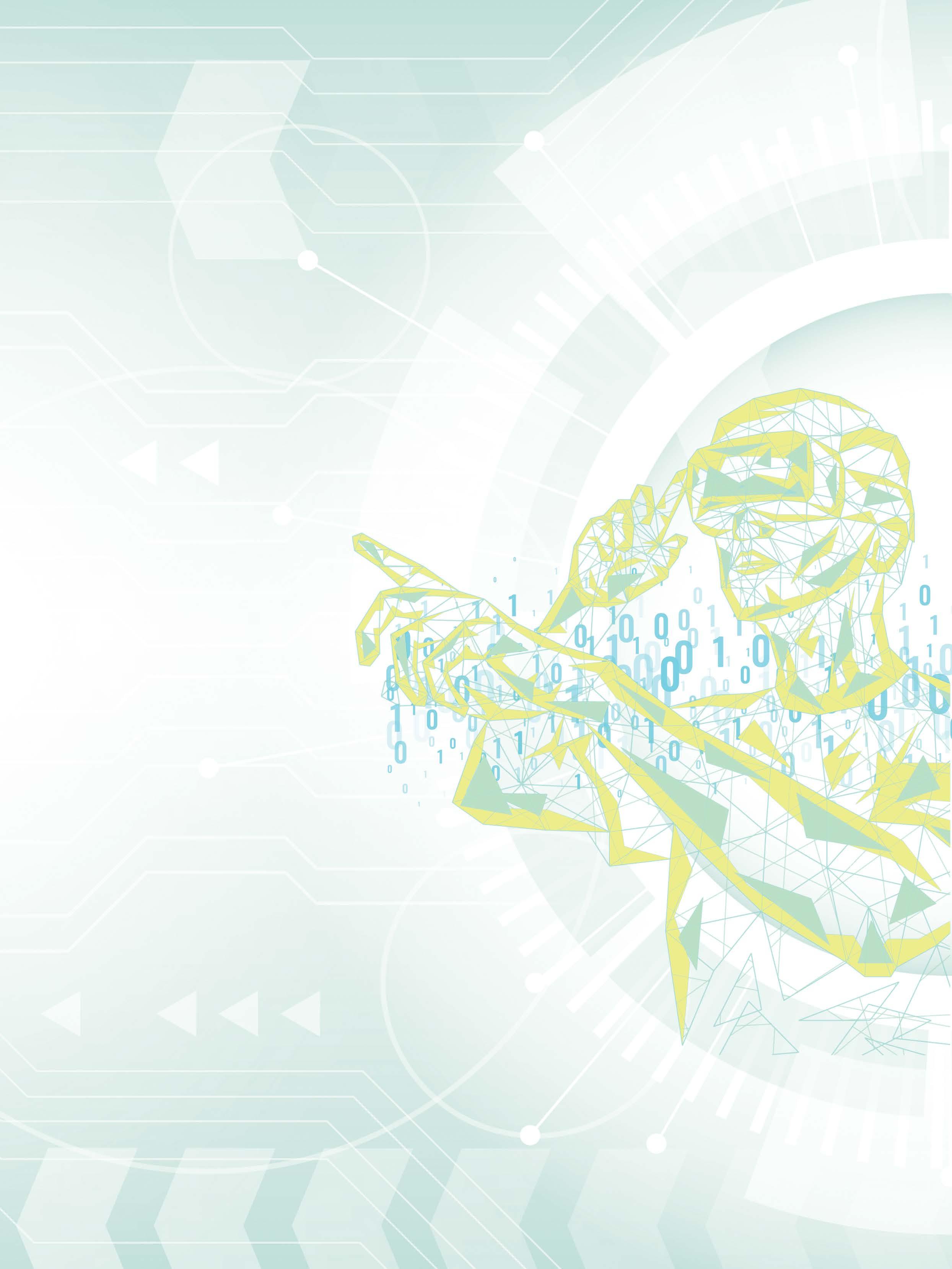
Company, a strategy consulting firm specializing in digital business.
“This requires a network latency below 2 milliseconds. It may occur at 10G, but it will come – and it will be possible because new companies will appear – not the Metas and Googles of today – which will create devices, networks, infrastructure, edge Internet, and interfacing, in such a way that it will be feasible to have a World Cup soccer match in which no one will need to travel to participate,” he added.
bigger,” said the expert.
The signs of that are evident in the journey of development of the new technological waves, as reinforced by Professor Carlos Nazareth, Director of the National Telecommunications Institute (Inatel). “The migration from a physical to a virtual world is happening and is getting
Soccer in the metaverse could very well be one of the milestones in technological advances that impact the relationship between the physical, digital and social environments. Just like the greater collaboration between humans and machines promoted by
32 Huawei . 25 years in Brazil www.huawei.com.br
stronger and stronger. 6G has a proposal to unite the biological and physical world with the digital one, with a reading of all of that in the digital world,” he said.
“Digital twins will become increasingly more present – a city in the physical world, with a twin city depicted digitally. The same goes for factories and
smart vehicles. It is Internet of Things, digital twins, and the interpretation of data applied to everything in the world.”
It is possible to envision a new world in the relatively near future. There is less than a decade left for 6G, which is beginning to provide the technical conditions for the Internet of the senses

– and to imagine that digital interactions will be more natural and intuitive, with people immersing themselves in virtual environments that are indistinguishable from the real world, and that entertainment tends to be a natural field of applications, as well as in training, medicine, design, and communication.
artificial intelligence and connectivity, collective intelligence platforms will allow groups of people to work together with intelligent systems to solve complex problems, which includes ourselves.

“In the medium term, we are going to take what we understand about large-scale computing and are going to use it to reprogram, understand, medicate, conserve and manipulate the human code,” argued Silvio Meira. And based on the convergence of the digital and human codes, a new universe of

possibilities will open up.
“From the standpoint of intelligence, we can imagine a computational increase in our ability to learn, where it will be possible to train machines to do things similar to humans. It will also be possible to use part of this knowledge to train networks of neurons in humans, at scale,” said the professor. “Instead of 20 years studying Mandarin – or an MBA in strategy at Harvard, or transformation at Cesar School – it will be possible to go to a learning clinic, on a bed, in a refrigerated environment, to train your neurons and learn Mandarin,” described Silvio Meira.
In this scenario, it is easy to imagine a customer at the Taperoá Market, in the state of Paraíba, editing the genetic code of the incubated cell that will generate their child, evaluating a cure for myopia, baldness or herniated discs on the
menu. “And since they are going to edit this code, why not add greater memory capacity or change their eye color?,” provoked the scientist and professor. This is, after all, the next revolution – the convergence of human and artificial intelligence. As Silvio Meira concludes, “in the next 20 to 30 years, we are going to start playing seriously with issues relating to a type of computation that will lead to another type of digital convergence: the convergence between the processing of information on silicon platforms and the processing information on carbon platforms. Editing people’s DNA to cure them, not with biochemicals dated from the Middle Ages, but by entering an era of convergence between silicon and carbon, with architectures of one of them being capable of interfering with the other.”
33 www.huawei.com.br Huawei . 25 years in Brazil
“In the medium term, we are going to take what we understand about large-scale computing and are going to use it to reprogram, understand, medicate, conserve and manipulate the human code.”
Silvio Meira
Founder of Cesar, Professor at Cesar School and Chief Scientist at TDSS Company
INTERNET ACCESS SHOULD BE CONSIDERED A HUMAN RIGHT
ACCESS TO Internet connection has become a matter of citizenship. The rapid advancement of technology is demanding public and private managers to be aware that the country’s economic development today is linked to a broad, high-quality connectivity infrastructure. Internet access is as fundamental as access to electricity.
Unfortunately, despite our advances, we still have 20% of Brazilians disconnected, either because the infrastructure has a poor signal or because mobile devices are expensive. Millions of Brazilians are unaware of the immense opportunities of the digital world. Brazil has everything to become a Digital Nation, but data such as this may delay the process.
Since Huawei landed in Brazil 25 years ago, much has been done, and the digital infrastructure has advanced. Nevertheless, building a Digital Nation implies a holistic view on the part of decision makers regarding the work required for the connected and intelligent economy to generate development and prosperity.
What do we have today? Many digital policies – several of them very good – scattered across different spheres of government, agencies, institutions, companies, and universities, without any interaction between them. Good actions in progress in one municipality do not reach others because they lack a holistic vision that allows good examples to be replicated quickly. Unified public policies in medium and long-term planning will allow Brazil to stand out in the current international scenario and take advantage of a historic and unique window of opportunity.
ONE YEAR OF 5G IN BRAZIL: A POSITIVE BALANCE
It is a fact that technology is available to bring Internet access to all Brazilians, regardless of where they are or what their income is. The human factor is fundamental in this process of development of Brazil as a connected nation. We are celebrating one year of 5G deployment in the country, with effective results. The way the auction was organized has been a victory for society,
helping secure the resources that are expanding the connection infrastructure. Thus, roads, until then disconnected, are starting to gain 4G and 5G coverage outside large centers. Sector funds are emerging as powerful allies to make public policies viable. The use of the Fund for the Universalization of Telecommunications Services (Fundo de Universalização dos Serviços de Telecomunicações – FUST) is discussed to bring connection to schools across all states, impacting the learning of millions of students. These sector funds can be used even more to expand mobile and fixed broadband.
5G AND INDUSTRY TRANSFORMATION
5G grows quickly and the trend is towards transformation of economic sectors. There is a tradition in connectivity generations that shows that the odd ones tend towards B2B and the even ones towards B2C. In the 3G generation, for example, we had the emergence of electronic commerce and the massive use of payment machines. 4G brought new consumer services such as video streaming and more sophisticated e-commerce. We now realize that consumers are eager for innovations, but the trend for 5G to be more focused on creating 5G agriculture, 5G industry, 5G health, 5G education, 5G ports, 5G governments, and so on.
“Building a Digital Nation implies a holistic view on the part of decision makers regarding the work required for the connected and intelligent economy to generate development and prosperity.”
ARTICLE
Even with its advances, Brazil still has 20% of disconnected citizens. Digital inclusion must be seen as an essential service, just like electricity.
34 Huawei . 25 years in Brazil www.huawei.com.br
Por ATILIO RuLLI Vice President of Public Relations • Huawei Latin America and the Caribbean
THE NEED FOR DIGITAL TRAINING
Soon, the technology should reach 5.5G and, by the end of the decade, 6G, when the digital transformation of the economy will impact the daily lives of all of us in a completely different way. The 5G network connects 1 million devices per square meter. In 6G, it will be 10 million. While today we already have the Pix revolution, a Brazilian success for the world, with 6G, cloud computing and artificial intelligence should innovate banking transactions even more. For the potential of this transformation to benefit everyone, the country must start preparing now for this scenario.
According to ANATEL, Brazil currently has 261 million cell phones and about 100 million tablets, which together add up to 361 million devices or 1.6 devices
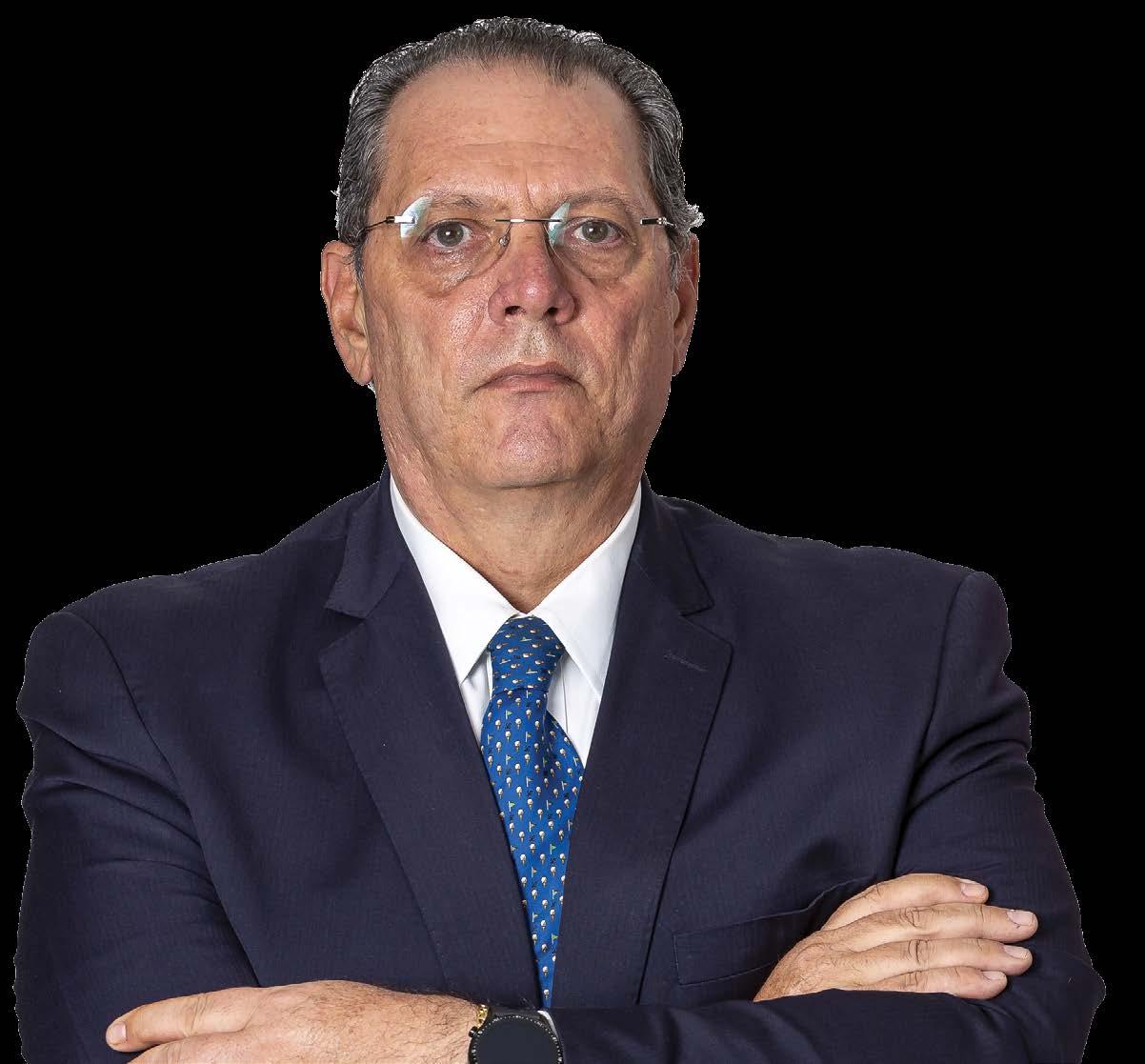
per inhabitant. Nevertheless, their distribution, like income, is very uneven. Public managers can do a lot to reduce this inequality with policies that facilitate the acquisition and distribution of cell phones or subsidized and cheaper access to these technologies. Another factor of equal importance is qualification, education and training aimed at two fronts: the reduction of digital illiteracy and the training of a qualified workforce, which is essential to guarantee the development of the ICT sector in the country. Education is the area that requires the greatest effort from the various social stakeholders.
The public initiative ought to encourage educational policies aimed at new demands, public and private educational institutions must update their curricula and offer courses,
training, and certifications and, finally, companies need to actively participate in this training system. Huawei, for example, has a number of initiatives, such as the ICT Academy, Seeds for the Future, and Women in Tech, which are carried out in partnership with governments, institutions, and more than 200 universities in Brazil alone. Developing talent is crucial to any nation’s digital success. The Brazilian situation, when compared to other realities, and as long as the window of opportunities opened at this moment is not lost, is positive. Inclusion is taking place quickly. Central Bank data show that we have more than 182.2 million Brazilians with access to the banking system, thanks to the advent of the Pix payment system, minimum income social programs, and digital banks. in the area of e-government, according to the World Bank, in a survey covering 198 countries, Brazil ranks second in digital services offered by the three spheres of government, behind only South Korea. We occupy the first position among all countries in the Americas and among countries with over 100 million inhabitants, with over four thousand services offered to the population. It is a remarkable fact.

THE PATH IS POSSIBLE
To expand this success, Brazil already has the map. Universal connectivity, integrated public policies, easy access to mobile devices, and digital education: these are the actions necessary for the country to carry out the digital transformation of its economy and take advantage of the enormous opportunities for development and the generation of new businesses and new jobs in the coming years. This is the essence of the Digital Nation. Huawei, completing 25 years in the country, will continue to make efforts to help Brazilians in this task, which is, in fact, a job for all of us.
35 www.huawei.com.br Huawei . 25 years in Brazil
“Universal connectivity, integrated public policies, easy access to mobile devices and education for the digital environment: this is the essence of the Digital Nation, and Huawei will continue to put its efforts to help Brazilians in this task.”
